Fishing for Golden Dorado in Argentina on the Rio Parana
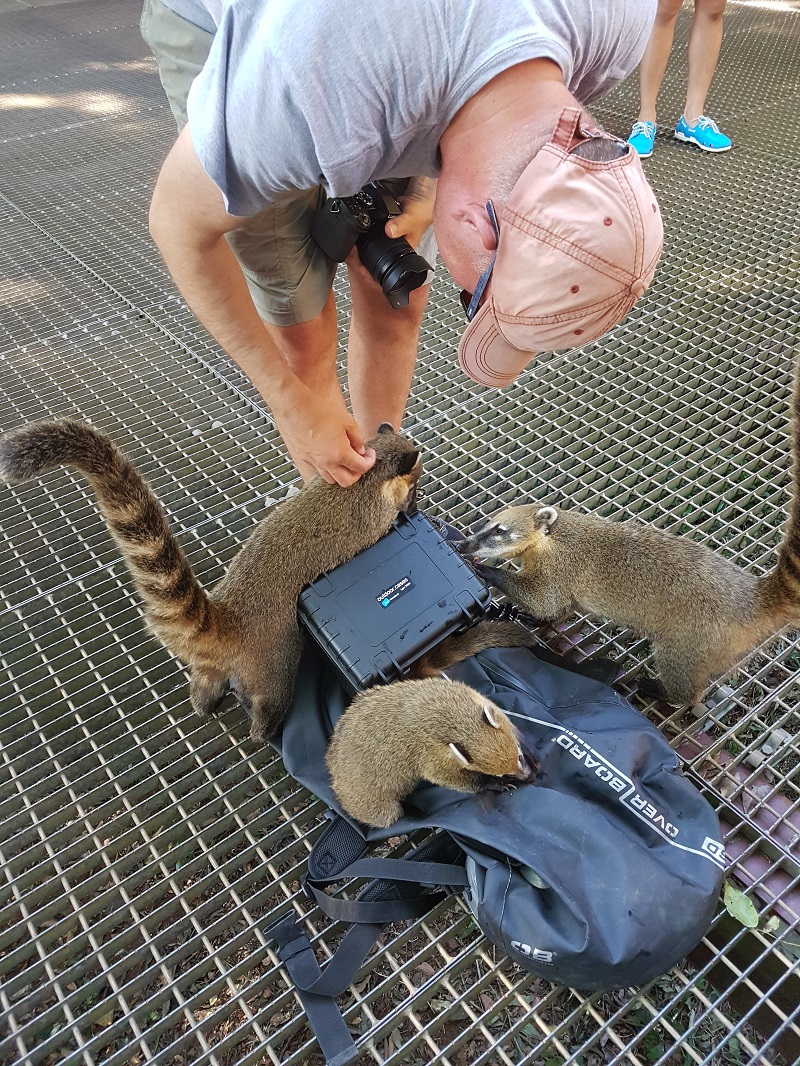
On our list of “dream fish” to be turned from dream into reality, the Golden Dorado featured high for both Michel and myself. As most of the information on the internet is in either Spanish or Portuguese, languages we do not master, we were very glad to get in contact with Beto Chioquetta of Personal Pesca. In different emails, he explained us the different areas, rivers and ways to fish for our desired Golden Dorado.
A big part of the joy of a fishing trip is the preparation, month before the actual trip. Part of this preparation was getting in contact with people who fished the Golden Dorado before. We like to thank Steve Ryan, Steve Townsend, Bob Daley and others who helped us collecting the necessary information.
After receiving all kinds of information and possible fishing spots, we made our choice. We would try our luck on the lower Rio Parana in Argentina. To be more specific in a small town called Paso de la Patria.
Rio Parana forms the southern border between Paraguay with Argentina. And at Paso, the Rio Paraguay flows into the Rio Parana. At this point the river is quite deep. And, more importantly, it holds big specimens of the Golden Dorado!
Our journey
My wife Marie Therese was so kind to drop us of at Amsterdam Schiphol airport, heading for the first leg of the journey, an 11 hour KLM flight to Rio de Janeiro. After a short stopover in Rio, we continued our journey with a domestic flight to a place called Foz do Iguassu. This place is world famous for its impressive waterfalls.
When we arrive In Foz, it is already dark. We are welcomed by Beto. We’re glad that Beto has brought a young guy who speaks very good English. With him as a translator we are therefore able to talk with Beto about our mutual passion: fishing! Beto is a passionate fisherman too and even has his own TV fishing show in Brazil. So it looks like we’re in good company?. The drive towards the hotel is not very long and although it’s dark, we get our first impressions of Brazil. Than we are dropped off at our hotel where we will crash for a good night sleep.
After a good breakfast in the morning we prepare for the last part towards our fishing destination. We meet our driver who will drive us for an estimated 8-hour journey to Paso. Fortunately, the driver speaks German which makes communication with him not too difficult.
Before we will cross the Brazilian – Argentinian border we do some small shopping, organize some local currency and make a quick stop at the 3-country point of Paraguay, Brazil and Argentina. Then it’s time to sit down, relax and enjoy a scenery route on “National 12” that runs parallel with Rio Parana, heading West. This route takes us through large forests interrupted by small villages. We’re surprised to see that we have to stop every 30 kilometers for an armed checkpoint. We are told that there is quite some smuggling between Paraguay into Argentina which is the reason of the many checkpoints.
When we have spent already a few hours in the car, a Mitubishi Pajero, it’s time to have our fist Argentinian lunch. And we know now, Argentina is no country for vegetarians! If you think Americans can eat meat, well, than you haven’t been to Argentina! We’ll experience this the first time when stop for a lunch at a road side restaurant. This lunch consists a salad buffet and, more importantly, a waiter who fills the table every time with a big plate with all kinds of grilled meat. Not a bad start!
Car troubles
We soon find out that most guests in the lunch restaurant are Brazilian fisherman. They form a big group who is also heading west, driving in a big black touring car. With our bellies full of Argentina beef, we continue our journey. The tropical rainforest is changing into production wood with pine and eucalyptus trees and somwhat later, the landscape changes into a wide pampa.
Our drive is going well. But when we have another 3,5 hours’ drive to go, we’re still in the middle of the empty pampa’s, we hear a “bang” followed by a sudden silence of the car engine..
We fear the worse. It might be something small but more likely we have a major engine breakdown, as Michel recalls having experienced the same with his former Land Rover. The driver is doing his best to fix the problem, but still unsure what it is, this isn’t working. When it looks like that the car can’t be repaired, we decide to try to get a new driver or taxi. Unfortunately, the nearest driver seems to be 3 hours away. It looks like it is going to be very late tonight..
Then, after an hour of ineffective car repair attempts, luck is on our side. The Brazilian touring car, with the fishermen we met at the lunch break, shows up in the distance. With a lot of arm movements, we make them, standing on the road, clear that we need help. It works. The bus stops. Although the bus full of fisherman doesn’t drive all the way to Paso (our destination), it will continue heading West for at least 2 hours.
The bus driver is very kind and agrees on taking us with him. In the meantime, a driver from Paso will start driving East towards our bus. Then, when they meet, we’ll switch to that bus for the final part, so is the plan. It works. After 2 hours, both busses meet and with a big thank you to driver and wishing the fishermen luck (muy grande Dorado!) we drive to Paso where we finally arrive at 19.30. We’re checking in in our room before dinner (meat!) is served.
The Fishing – First attempt
On Sunday morning we meet Horacio, our fishing guide for the week. He is born and raised in Paso and knows the Parana river as the palm of his hand. At 7.30 in the morning we enter his boat to try for the first time our luck for a “muy grande”. The Rio Parana is large at Paso, very large. We estimate the distance to the other side of the river (Paraguay!) at least a kilometer, on some parts even more. The current on the river varies from moderate to pretty strong, comparable with our large rivers in Holland (Waal, IJssel). The tactic to try to reach the bigger Dorado’s will be drift fishing. The big ones, so we are told, are hiding upstream from underwater rocks. With drifting, we will cover a large area and we’ll have a good chance to get our bait near to them.
One of the better baits for the big ones is a lifebait called “Murena”. These creatures look like a hybrid between a miniature Wels Catfish and an Eel. The length of these Murena’s is approximately 20 cm.
Most locals fish with 20 lbs monofilament on a short rod, which is the reason I will also start with this. Michel, obviously targeting monster fish, starts with a heavy 50 lbs braid. To our main lines. we attach a 70lbs coated 7×7 strand leader with a 10/0 Owner single hook. To get the leader a bit faster near to the bottom, two lead shots with in total app 5 grams are mounted.
When the drift starts, it’s a matter of giving enough line to send the bait in the direction of the bottom. In the beginning, as we don’t know the depth (there is no fish finder on the boat), we are not sure how much line we should bring out. Horacia is telling us to give “mas lina” time after time. Until we have around 50 meters of line out and we are presenting our baits near to the bottom of the river, which is at around 6-8 meters deep.
While drifting, the technic we use is bit like the fishing we do on the Dutch rivers for zander: a quick diagonal pull upwards followed by a slow controlled drop of the bait. Making sure that at the end you regularly feel the bait touching the bottom.
As we are targeting the bigger Dorado’s, just a few attacks are to expect. The attacks will be fierce like a steam train, so we are told.
It requires quite some skills in the fast-moving boat in the current to let the fish take the bait for 1-2 seconds and then do a firm strike to set the hook in the bony mouth of the Dorado. I miss my first two bites by striking too quickly but then Michel hooks up at his first bite! Dorado on!
The Dorado appears to be splendid fighter. Although this first Dorado isn’t very big, it rushes to the surface and shows itself with a few jumps. We can see the beautiful golden color shining in the sun and after a short fight we shake hands for landing our first Dorado, a fish we travelled for for two days! We make some pictures before releasing it back into the muddy water of the Rio Parana.
We fish till 12.00 and then break, during the hottest time of the day, for 3 hours to have lunch & siesta @ Pasado. When we arrive we are asked what we would like to eat. As we think we’re getting this asked for the dinner later that day, we follow the suggestion to have at least two steaks. Two, because they “are not that big”. Then, when shortly after we are served two full size steaks – yummie-, we realize that this was asked for our lunch.. For sure in Argentina we will not run into any protein deficiency?
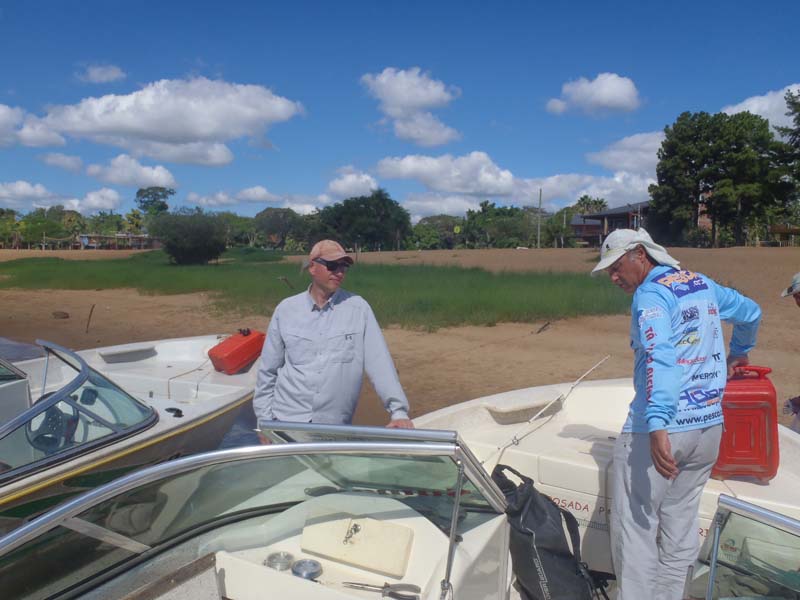
In the afternoon session we are heading upstream where we are fishing from 3 to 7. As for the morning, we are fishing concentrated on the few fierce takes. The second bite that I encounter happens at the moment that I have opened my reel for giving some extra line; this results in a tremendous “spool mess”, but the fish is firmly hooked and despite the mess on the reel I can land my first nice Dorado!
During dinner in the evening, enjoying the meet and a few beers, we draw the conclusion that this fishery requires utmost concentration. And that we are dependent on turning the 2-5 bites a day into good hook-ups. After dinner, having the southern hemisphere summer “in our skin”, we turn in for a good night of sleep.
Over breakfast the next morning, we decide to stay true to our tactics aiming some big dorado. In the morning, we both hook up to a fish, but unfortunately both lose it during a jump. During the fight, Dorado’s shake their head hard trying to get rid of the hook, something at which they prove to be pretty effective.
With a firm flow of the river, getting stuck to the bottom, which sometimes happens, results in a screaming drag. This also happens to me, well, at least I think. But Horacio keeps screaming: pesca; pesca! We know by now that this means fish on, and suddenly the bottom starts moving. The pretty light borrowed rod and reel filled with 20 lbs mono is fully maxed out in the drill. But for sure this is no Dorado as the fish stays deep. I slowly try to direct the fish to the surface, where after a few minutes we see an 8 pound Jau catfish surfacing. Not what we came for, but definitely a welcomed guest in the boat.
After this fish, we conclude that the locals fish very lightly, both for the rod and the 20lbs mono. I therefore also decide to continue, like Michel, to fish with a Shimano STC Monster rod, paired with a 6000 spinning reel with 40 lbs braid.
Beautiful Dorado
Michel has really picked up the motions in the meanwhile: quickly lift, gently put the bait back on the bottom and then quickly lift again. At a take, he’s letting the fish take the line for a second or two by moving the rod tip to water before striking firmly. Fish on again! This time it’s clear that there is a much better adversary on the other side of the line. The drag is screaming loud and I quickly grab the camera to capture a big Dorado jumping in the surface. When the fish is heading back to the bottom again Michel is putting heavy pressure to prevent that the line can get snagged on the rocks on the bottom. Things are going well and slowly the fish is coming towards the boat.
When the clearly very nice Dorado shows up near the boat for the first time, we see that it is not very good, just very lightly hooked. For a moment, there is some panic in the boat. Horacio yells a few things we don’t understand but we understand he is afraid that we will lose the fish. Michel opens up the drag a little, but more than that, we can’t do (do I see the non-religious Michel practicing some praying??)
Than the fish lies tired besides the boat. Grab it – grab it! Michel shouts. Horacio’s first attempt fails as the fish swims away again, but on the second attempt he firmly grabs and lifts it in the boat culminating a loud YESSSSS !!
In front of us lies a beautiful colored, fat Dorado. The head is hard and bony. As for pike, also with Dorado, an extra 10-20 cm extra results in a completely differently built fish. 4 times heavier, fat belly, tough mouth with small teeth around like tin snips. Horacio estimates the fish to 12 kg. Any Dorado above 10 kg is a nice, nice specimen. With a big grimace for Michel, we do a quick photo session before the fish is firmly swimming away.
Although this is only our second day, we really start to appreciate the 3 hour siesta. While avoiding the scorching heat on the water, we enjoy the marvelous lunch at Pasado, rest a bit and enjoy the conversations with the other fisherman in our lodge.
If there is one thing that’s becoming clear to us: Argentineans and Brazilians love fishing! On Sunday, we are on the water with at least 30 boats, and today, Monday, we are still with 15 boats on the water. Plus we see people fishing on the bank everywhere. Fortunately, the Rio Parana is a huge river so that most of the times we fish without any boats even nearby. When we ask about this, we learn that this actually is quiet by comparison. In the Argentinean high season, their summer starts at Christmas and runs till end of February, it is not uncommon of having more than a 100 boats on the water!
Although the fishery is well developed here, fishing the Rio Parana is pretty unknown in Europe. Not too many European anglers are fishing here. For reasons of distance and language, Argentina isn’t very well connected to the European “collective awareness” in the fishing scene.
You would expect with all these fisherman that the fishing industry is doing very well in Argentina. In the last 5 years, the booming Brazilian economy (Fishing in Argentina is popular under Brazilian fisherman) provided plenty of business for most operators in the area. However, the hick-ups in this economy of the last 18 months in Brazil has caused a significant drop in the amount of fishing guest showing up.
In the afternoon, we head upstream where we watch a tug pushing a set of 4 long, 4 wide barges upstream towards Paraguay. As it got too close to the Argentinean shore, it is grounded and stuck to the bottom. It takes more than half an hour maneuvering before it manages getting loose. Paraguay has massive Asian and American imports which shows from the big barge combinations loaded with containers. As Paraguay has little to no duties on imports, in contrast to Argentina who is trying to protect its domestic industry, the result is active smuggling and also police patrolling across the river. For which reason, it is not allowed to be on the river after sunset.
Big fish on!
In front of an Argentinean border patrol station, Michel gets a fierce bite that we effectively hook-up. After the first strong run, the fish shows in the surface. It is a huge fish. It is so big that it does not jump out of the water. The fish tests Michel’s Shimano Monster STC travel rod to the max, before showing up after 10 minutes near the boat. Wow this is real big fish, by far the largest Dorado we have seen so far. An absolute beast!
Horacio is also very excited, this is a real good one. He estimates the fish to be around 17 kg! After making pictures we put her back into the water, holding it for a moment to be able to find back her strength, before she is swimming away. Leaving Michel behind as probably the happiest man on earth.
The rest of the afternoon we increasingly experience problems with Piranha’s – a species that the Argentineans refer to as “Palometta”. After starting to eat the Murena’s tail, the Palometta’s progress towards the head resulting in hard and aggressive bites. Finally, I hook up one. Although a nice fish by itself, this is specie we don’t like to encounter as they are largely a nuisance destroying our baits every time.
After a lovely dinner and a splendid night sleep, we are all energized for our third day fishing. This time we will go very far upstream, fishing north of one of the many islands in the river. Michel quickly lands a small Dorado while I, in a flurry of over-concentration miss a bite by striking a bit too quickly. This happens to us quite a few times during the week. Like with other fisheries, it’s a batter of keeping the bait in position after a miss-strike, as on several occasions the Dorado is coming back for a second bite.
Michel continues his good hook-up ratio and the bend on his rod reveals that another good specimen is hooked up. Near the boat we can admire the fierce strong built body of another 10 kg+ fish that Horacio estimates on 12 kg’s.
Fight with a crocodile
We are having lunch with Mateo and Jonathan (Yoboy). Jonathan, an American who lives partly in Texas and partly in Mexico, is running a commercial fishing boat for swordfish and other species. He is also a fanatic spearfisherman. Over lunch he is telling us the story behind his slight lisp and the multitude of stitches in his right jaw.
During a spear fishing session blast year September, he got attacked by a 13 foot sea-crocodile, who grabbed his head. Fearing for his life in the mouth of the crock, he could only fight the beast off by poking into the crocs eyes and punching it at the throat. When we look at him a bit in disbelief, he invites us to feel the bite marks on the top of his skull (deep) and shows us the X-rays of his jaw being totally dislocated and scattered into 7 pieces. We have never seen such a bizarre X-ray picture. We can only conclude that, despite many painful operations, he can be very, very glad to be alive. What an unbelievable story to tell!
The afternoon session Horacia wants to try another technic with another baitfish: the Boga. Boga is a chub-like, 2 to 4 pound fish that apparently is still not a too big as a bait for the Golden Dorado. Near the banks of a sandy island in the middle of the river, we manage to catch 3 Bogas, using a few days boiled/soaked and fermented corn kernels. Despite this other bait, it is again on the Murena bait that Michel hooks up his 6th Dorado, a beautiful 8kg Specimen.
We continue the fishing after lunch, where I miss-strike my only bite of that afternoon. Being together on a fishing trip is not a competition, but the 6-1 in Dorado’s caught – is a serious “character building test” for me, I am thinking to myself flushing my frustration away with a beer that night.
Wednesday
The next morning we are refreshed and contemplate our options over breakfast. We conclude that the chosen tactics based on our experience and on what we hear from other fisherman do not result in the number of bites that we hoped for. But the 4-10 bites we have during a day, do result in the occasional big Dorado that we came for. Therefore, we choose to simply continue our technique.
When we arrive at the spot where Michel landed his big 17kg Dorado, we quickly drop our baits and give line. It’s 8 o’clock in the morning, but the sun already shines bright and strong. For this reason, I put my rod in the rod holder so I can take my sunglasses out of my bag in the front of the boat.
And of course – this is not a comic book – exactly on that moment my bait gets taken hard. Resulting in a loudly screaming drag. I struggle to my rod and pick it up for a strike, a procedure with takes maximum 2 seconds, but the fish is gone. Horacio nods his head: ” si, si un muy muy grande”! Yes thank you very much for that..
For the rest of the morning we notice that the wind has changed direction, probably the reason for a lack of activity of the fish in general. The only noticeable fact is that we lose several leaders for being snagged to under water rocks. Also the afternoon fishing turns out to be tough, except for a drift through a big school of Palometta’s resulting in a double hook up of these pest fish.
In the afternoon session, I hook up a small Dorado. Close to the boat it jumps again and releases the hook. This happens to me two times again the next day. It proves the need of a firm strike to set the hook properly. Although both Horacio and ourselves keep focused, the Wednesday and Thursday are days with just little activity.
Friday
Our last day of fishing has started and we see that the weather has changed for the better. Before we have even starts, we already see much more liveliness in the river. We persist in our approach this last day and move to a stretch where we have caught most of our fish. It is a stretch where the murky water of Rio Paraguay flows into Rio Parana. We drift just 50-100 meters south of this divide in the water. Our gut feel turns to be right. Within 10 minutes I hook up a nice 5 kg fish which gives me a sigh of relief after 4 days of fruit-less fishing.
Our drifts are about 3 kilometers long, and every drift shows to be productive. In the second drift Michel hooks up a small Dorado. But in the third drift I finally hook up the big fish he was hoping for. The fish pulls 10’s of meters through the pretty tight set drag and then we see a very nice fish break the surface. I am putting a lot of pressure on the fish in the first minutes before I can win some line back. The fish is getting closer to the fast drifting boat now and I loosen the drag just a bit. At that moment, the fish decides to dive back to the bottom again. Where the unbelievable thing and the nightmare of every fisherman happens. The obviously big Dorado finds a rock and the 40 lbs line snaps… What happens than will be censored in order to adhere to the “correct language policy” we have for Dutch Anglers articles..
On the 4th drift, Michel turns another bite into a good hook-up and that results in a nice 8 kg fish.
In the afternoon session, the activity drops a bit. Still Michel lands another two small fish, leaving his total score on 10 fish for the week. I land that afternoon the largest Palometta of the week.
We fish till the very last daylight, we’re getting no more bites and say good-bye to the mighty Parana river.
Trip back
We pack our stuff, have a quick dinner and turn in early with the alarm clock set for 4.30 the next morning. The drive back from Paso de la Patria to Foz do Iguassu is smooth and uneventful and we turn up at our hotel around midday. Our original travelling plan was just to use Foz for flying in, but during the preparation of our trip we ran into many people who advised us to see the waterfalls. The waterfalls of Foz the Iguassu are declared one of the 7 wonders of natural beauty. Which is why we decided to visit these falls.
In the afternoon, we team up with Beto again. He has organized a trip to see the waterfalls on the Brazilian side (the waterfalls form a border between Argentina and Brazil). It is truly amazing. The waterfalls have a circumference of several kilometers. We see the river dropping 80 meters – at some parts in one drop, at other parts in a drop of 30 and a drop of 50 meters following the fault crack of the earth surface. And that in the middle of a tropical jungle setting. It is in one word gorgeous. The title of one of the 7 wonder of the world is very rightly said and not just a marketing gimmick.
Foz Iguassu falls
In the national park of Foz Iguassu we not only meet people, but also several dozens of nose bears. These bears have changed their jungle habitat for human presence, scavenging for food. They are the icing on the cake during this visit.
After returning from the waterfall trail, Beto asks us if we would fancy seeing the waterfalls from below. Yes sure! We move by a small rack railway to another point in the park. Here we have to leave our shoes and belongings in lockers before we board on a big RIB to have a close view and a cold shower underneath the waterfall. Soaking wet and fully satisfied we head back for the hotel where we will stay the night before flying to Rio de Janeiro tomorrow.
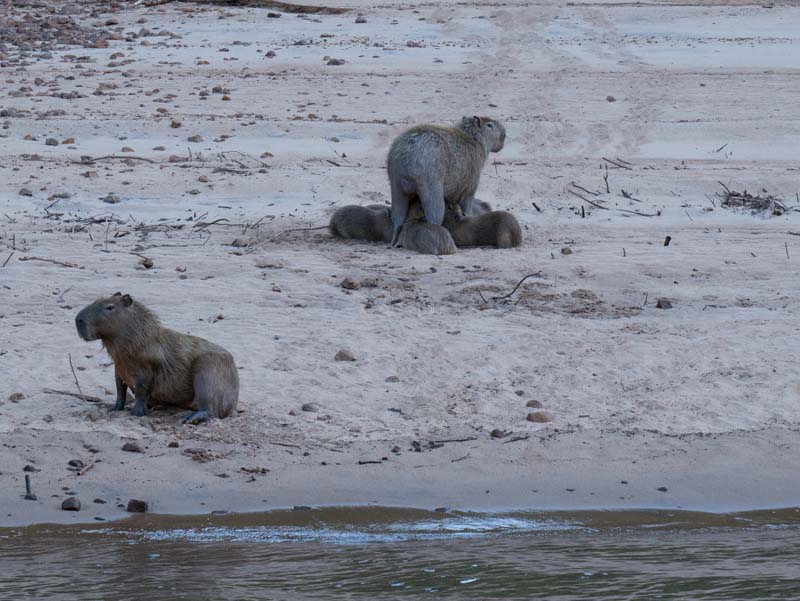
Capibara’s!
Closing our trip and back home
That evening we have dinner with Beto and his cousin at a true Brazilian BBQ restaurant: a Churrasco. Whilst we have an abundant amount of types of grilled meats being served, we ask Beto about all ins and outs on Dorado fishing. Beto and his wife are very well known Brazilian anglers, with their own Youtube channel: “Bom de Pesca” and TV show. He is an endless source of information and anecdotes, making the dinner delicious, informative and extremely pleasant. At the end of the article we have made a summary write up.
The home stretch
On Sunday morning we depart for the home stretch, we fly from Foz to Rio de Janeiro, where we use the 9 hours stop-over time to drink a beer on the Copacabana. foto Copacabana A long 11 hour overnight flight brings us back to cold and familiar Amsterdam. We look back on a very rewarding fishing trip. Brazil and Argentina are very nice countries, offer good food, great fishing and we made many new friends.
Rio Parana is a broad nice beautiful river to fish. The fishing for Dorado was with 4-6 bites per day with 2 persons a bit tougher than we anticipated, especially because the hook-up ratio wasn’t very good. The Dorado is a fish of stunning beauty and a tough and a hard fighter and jumper. The fishing on Rio Parana is very well developed, with many Brazilians and Argentians fishing. However, as the river is really big it is absolutely not extremely intensely compared with the “fishing scene” on the northern hemisphere. As we had a fantastic time, it is very likely that we will come back. We would like to thank Beto for the perfect organization of the trip and all good information provided ahead of the travel.
If you want to go fishing for Golden Dorado yourself
Regions
We found it difficult to find good information Dorado fishing on the internet. This is partly since the information is only available in Spanish and/or Portuguese, languages we do not master. One other reason is the fact that Dorado can be found in the area in South America where 4 countries Brazil, Paraguay, Argentina and Uruguay border. Tour operators from one country might offer trips in another country however – for example we saw many Brazilian operators in Argentina. Luckily, we got in contact with Beto, who could offer us the information on the various types of fishing and areas to fish. The Dorado is mainly found in two river systems: the Uruguay river and the Parana river and its tributaries (like Rio Corrientes for example).
Here is some information Beto gave us:
La Zona
Although we didn’t fish here ourselves, perhaps the most well-known spot for Dorado fishing is an area called “La Zona”. La Zona is the 1 km stretch south of the Salto Grande hydro – electric dam in Rio Uruguay, near Concordia on the border between Uruguay and Argentina. The Dorado swims upstream and feed on fish that are victim to the turbines of the hydro-electric dam.
Between December and April huge numbers of Dorado can be found here. La Zona is privately owned and fishing is allowed on only 4 days per week: Friday, Saturday, Sunday and Monday. And besides this there is a maximum of 2 boats and 4 anglers per day in “La Zona”. We have been told that fishing in La Zona can be extremely good, however it is also extremely expensive. A 4-day fishing permit (license only) costs around 3000 USD per person. Advantage of fishing in La Zona is that large numbers of Dorado can be caught on a good day, we have been told up to 25 with a chance on real big ones. The down side is that you’re fishing in a limited and not very scenic, semi-industrial area. It’s important to connect with a right operator to get you to La Zona, as we saw prices quoted anywhere between 1500 USD to 9000 USD for a week. Prices lower than 3000 USD are offered by operators who fish further away, downstream from La Zona, calling it fishing “near La Zona”. Other packages consist of sharing the fishing license between fisherman, where for a few hours you are allowed in La Zona, sharing turns with other fisherman, in order to exceed the 4 fisherman allowed at a time in the Zone. As the number of good months are limited, as so for the 4 days/week allowed fishing and the maximum of 4 anglers per day, the total number of available licenses are limited. Trading in available licenses might be the cause for the extreme prices we saw quoted here and there. Fishing in La Zona is largely done with large strong spinnerbaits or 8-15 cm long crack baits, of which Beto showed us several badly damaged examples. The limited fishing possibilities in combination with the high prices of La Zona were the reason for us to choose fishing on the Rio Parana instead of La Zona).
Upper and Lower Parana
The Dorado can be found in Rio Parana, downstream/south of Foz do Iguassu. The part of the river between Foz and Yacyreta is called the upper Parana. This part of the river is impacted by the reservoirs and hydro-electric dams in the river. These dams limit the Dorado migration along the river and has disconnected the fish from some important breeding ground, overall negatively impacting the population. South of the Yacyreta hydro-electric dam the Rio Parana there is a free flowing 1 km broad river, called the Lower Parana. This is where we fished. We choose to target the bigger fish using life bait, but casting and fly fishing from a boat casting towards the shores of the river is also possible. This will normally bring higher numbers of fish in the boat, but on average (much) smaller.
Rio Corrientes
Rio Corrientes is a shallow river system that meanders through a large wetland system before flowing in the Parana near Esquina. Rio Corrientes is regarded to be an important breeding ground for the Dorado. The meandering system of narrow shallow rivers and creeks makes it a popular destination for fly fishing for Dorado. Good numbers of mostly smaller Dorado can be caught in this way.
Types of fisheries
We have been fishing the whole week in the lower Parana region using life bait. The sole reason for that was that with this technique you can fish the deeper waters of the river. There you have the best chance to encounter big fish. Big dorado, so we were told, navigate behind and between the underwater rocks in the deeper parts of the river. That is why we fished there, near to the bottom. In the lower and upper Parana, cast fishing is also popular. Mostly used are small cranck baits (6-8 cm) which are casted towards the shores and rocks. As mentioned before, this typically brings in a good number of mostly smaller specimens. Top waters are very infrequently used, but on a good day, when the fish are abundant (like La Zona) these can produce fish too. People we contacted about La Zona typically advise spinner baits or other noise making artificial baits.At Paso de la Patria we also saw fly fisherman casting towards the shore. As fly fishing is not our cup of tea we don’t know much about the gear which is used for that. Beto indicated that the Rio Corrientes is a key destination for fly fisherman. The effectiveness for size or numbers is unknown to us, but then again that aren’t things that most fly fisherman really care about.
Tackle
The locals in Paso fish with light (10-30lbs) short 6ft rods equipped with a mid size reel with 300 meters of 20 lbs mono. After 2 days of fishing it became apparent to us that for fish heavier than 8 kg’s you simply lack enough body in the rod or strength in the line. We simply heard too many stories of lost big fish from other fisherman who were using these light materials that week. We would definitely go for line strengths in the order of 40 to 60 lbs. Our preference would be braid for good contact and hook-up, despite the fact that locals don’t like braid for being more sensitive to abrasion near rocks.
Lines, rods and reels
For braid by the way, we never use bright colors (Yellow/White or Depthhunter) in waters where Piranhas are present as this will cause bite offs because of the high visibility. We used moss green and Vermillion red Powerpro. The same would apply to the rods. We would advise a rod with a flexible tip, but plenty of body pulling the fish away from the bottom (20-40 lbs class). We like a somewhat longer rod as well, an 8ft rod suits this fisherie very well. We fished with the Shimano STC Monster – a rod we both like a lot and is perfect for this job. For a spinning reel, use a 6000 type or another reel that can hold 200-300 meters of line readily. Optionally you can use a baitrunner, capable of giving line easily. Other people might prefer a reel however. Use sturdy type equivalent to the spinning reel describes, with same line capacity. Due to the very sharp mouth of the Dorado, a steel leader is a necessity, somewhere in the 60-80 lbs area. Piranha’s biting the leader might cause bends in the steel leader, ultimately leading to weak spots. I missed a fish breaking a presumed damaged leader at a hook-up myself.
When it comes to hooks and Dorado – they can’t be sharp enough and they need to be really strong. For life baiting we used 10/0 SSW Owner hooks. Check these however regularly because they can get dull hitting the underwater rocks and replace them immediately if necessary, For crank baits and spinner baits, we were advised to replace the hooks with x-strong 1/0 or 2/0 trebles.
Contacts
For organizing a fishing trip, please hook up to a trip organizer that is dedicated to fishing and can be trusted. Work your network on social media and Facebook. We can wholeheartedly recommend to contact Beto Chioquetta at http://www.personalpesca.com.br/ or viajecom@personalpesca.com.br by e-mail. Beto’s cousin will make sure you get an answer in English. This man passionately knows his fisheries as you can see on Youtube on “bomba de Pesca”.
We also like to thank Gonzalo of Pasado de la Patria for being a very good host during this week. We can definitely recommend you to stay in his lodge. If you plan to go down south we wish you tight lines!
Roel Orsel

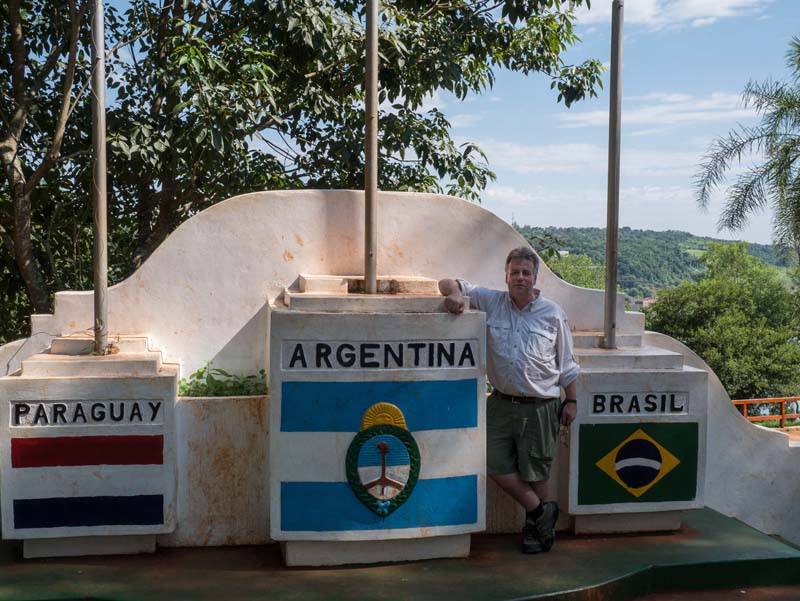
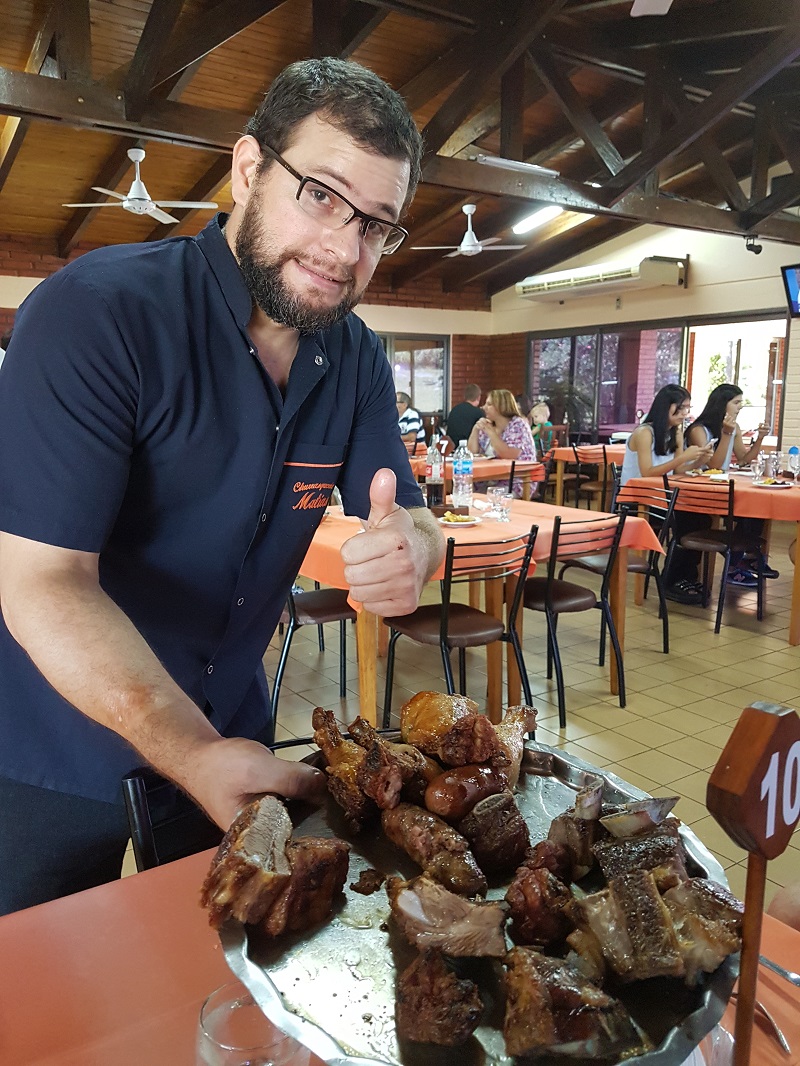
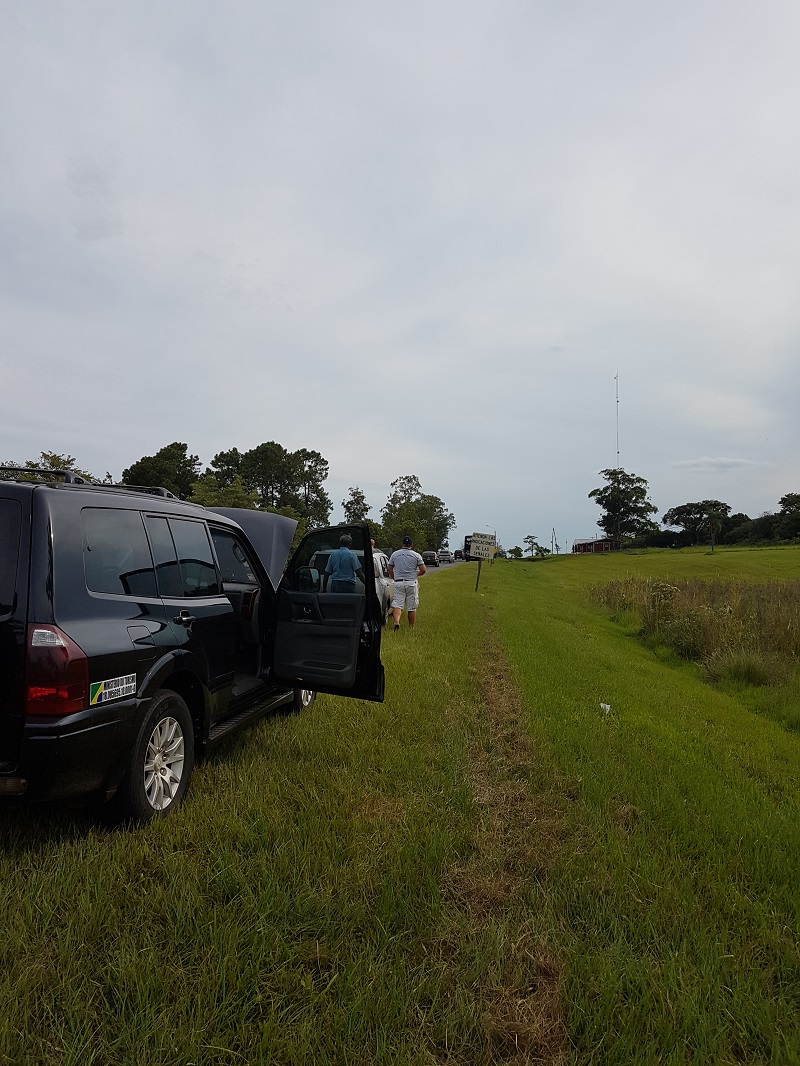
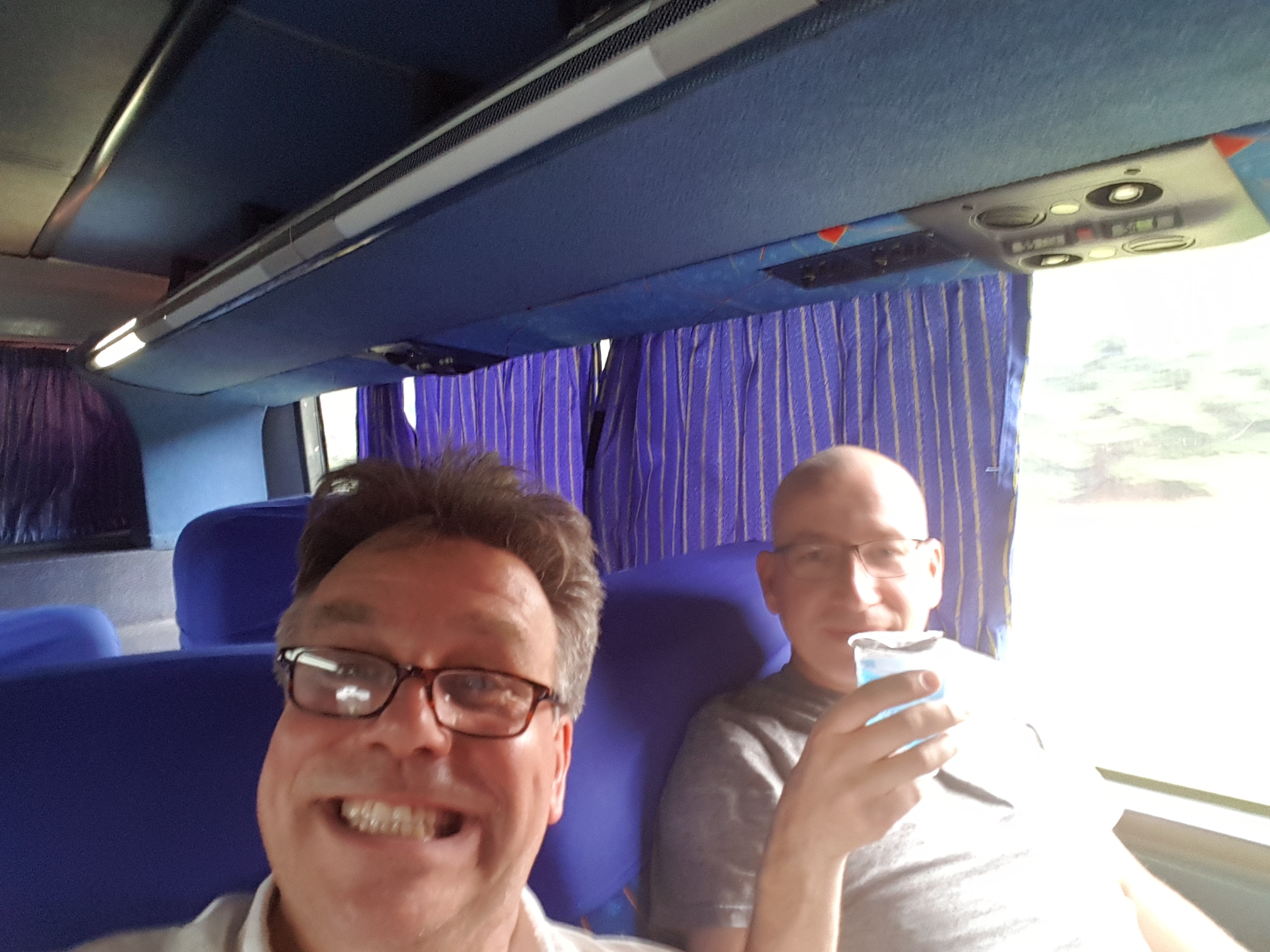
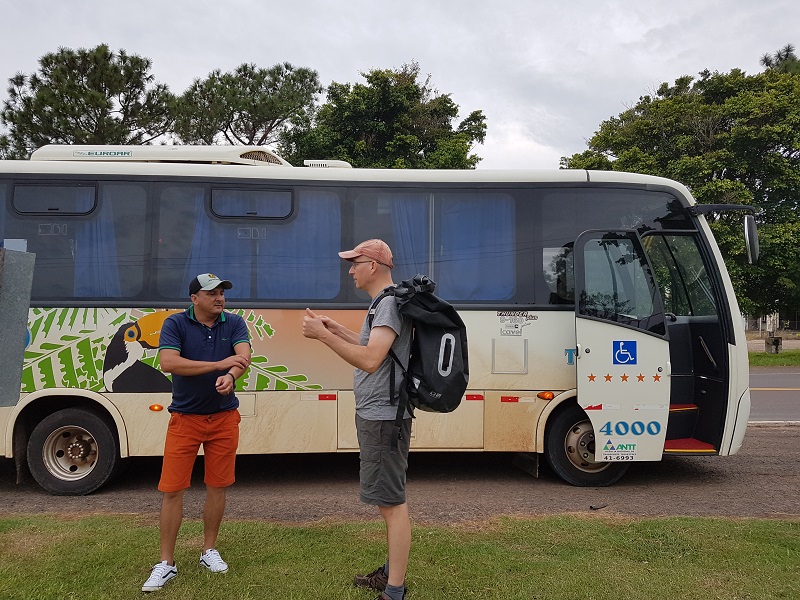
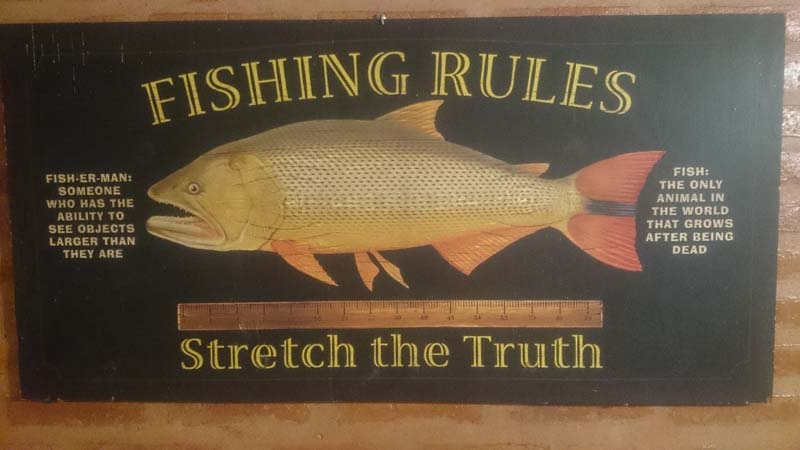
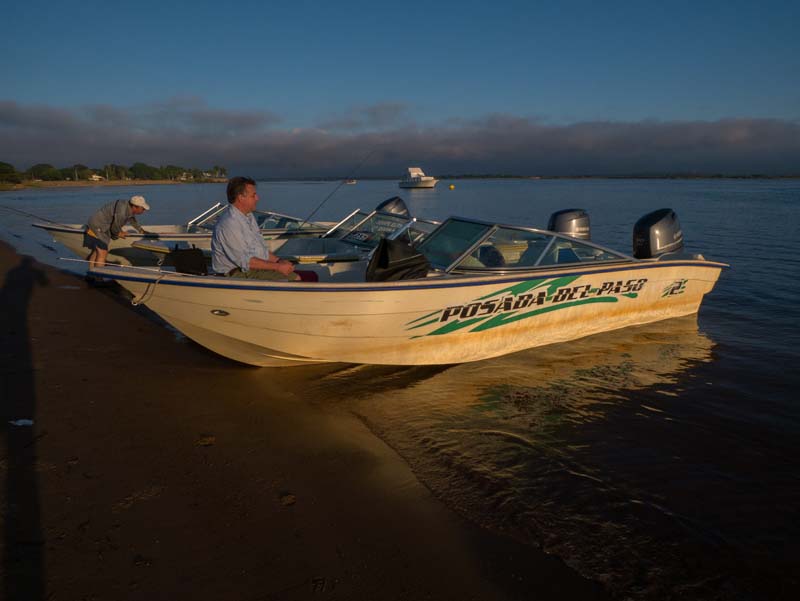
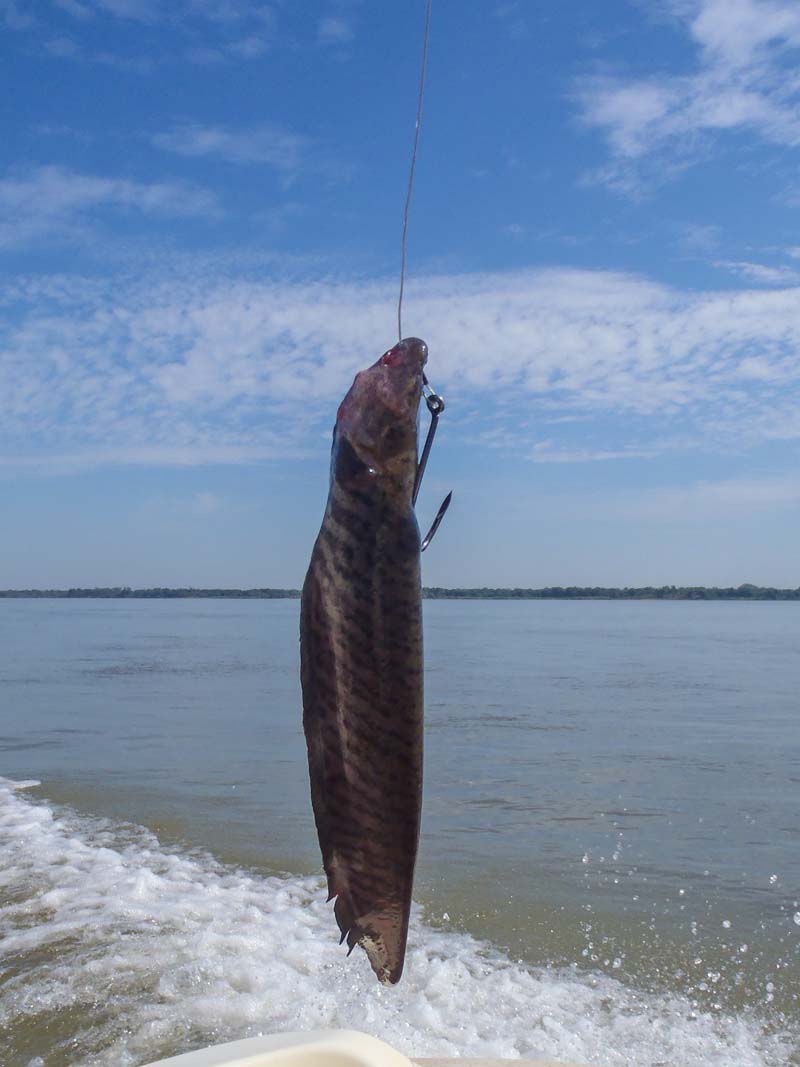
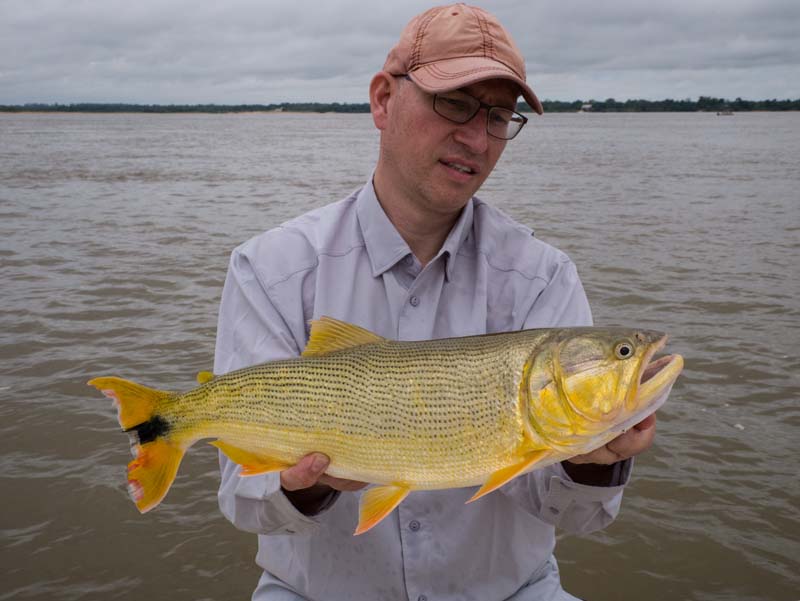
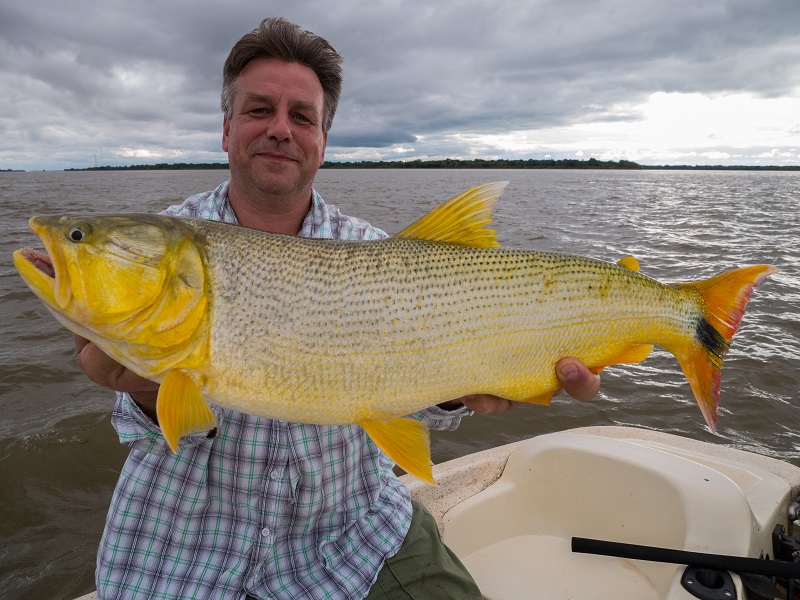
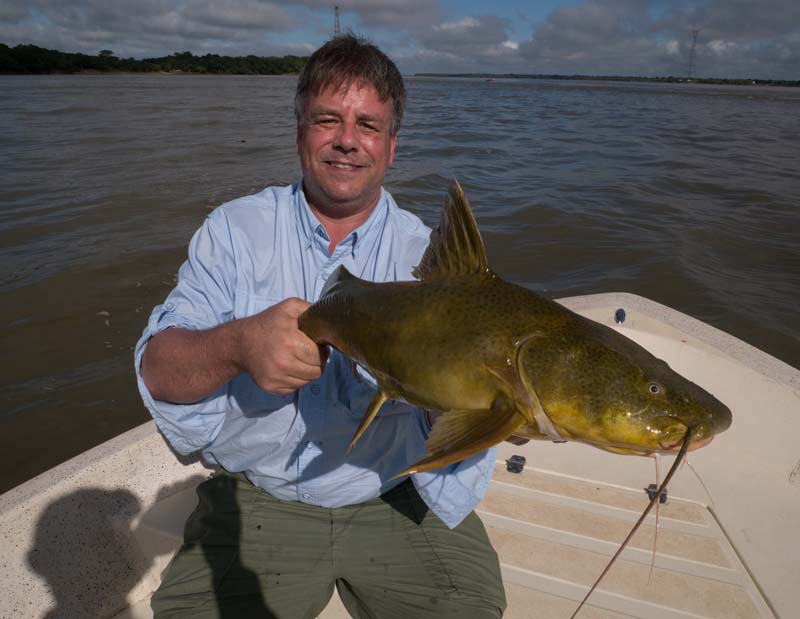
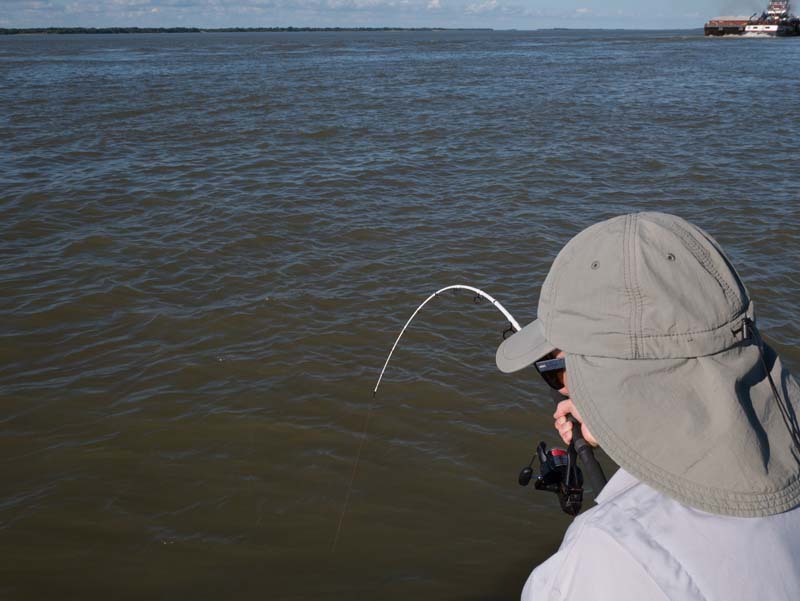
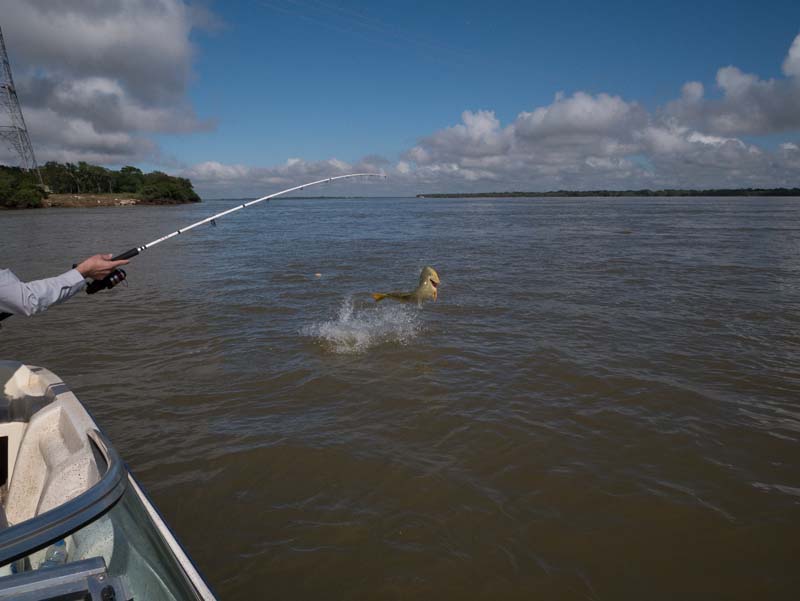
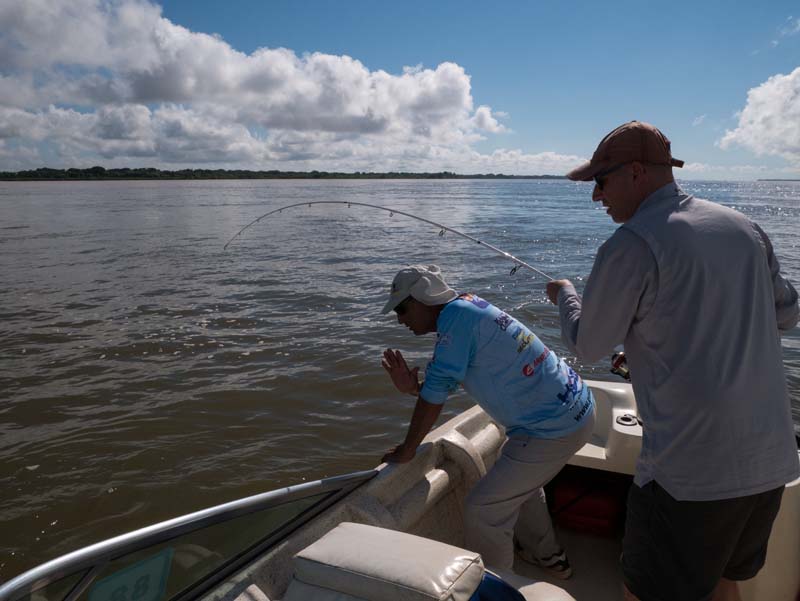
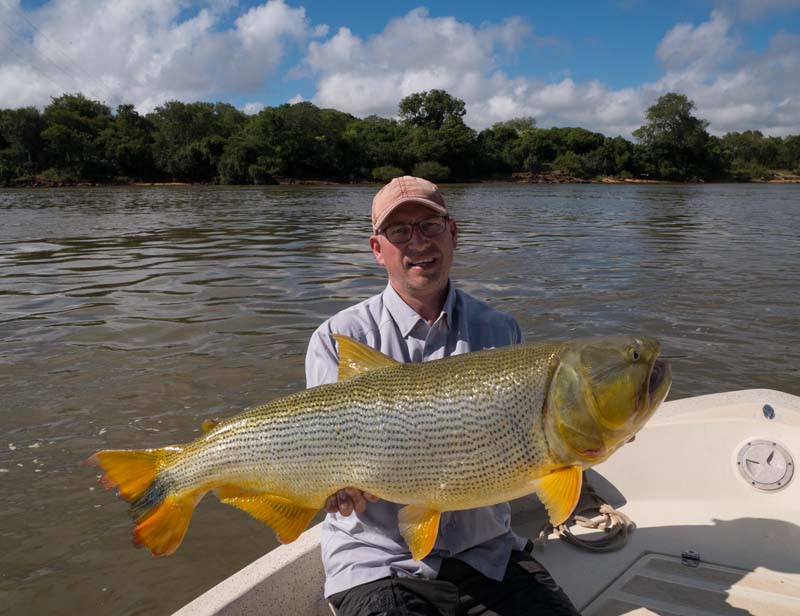
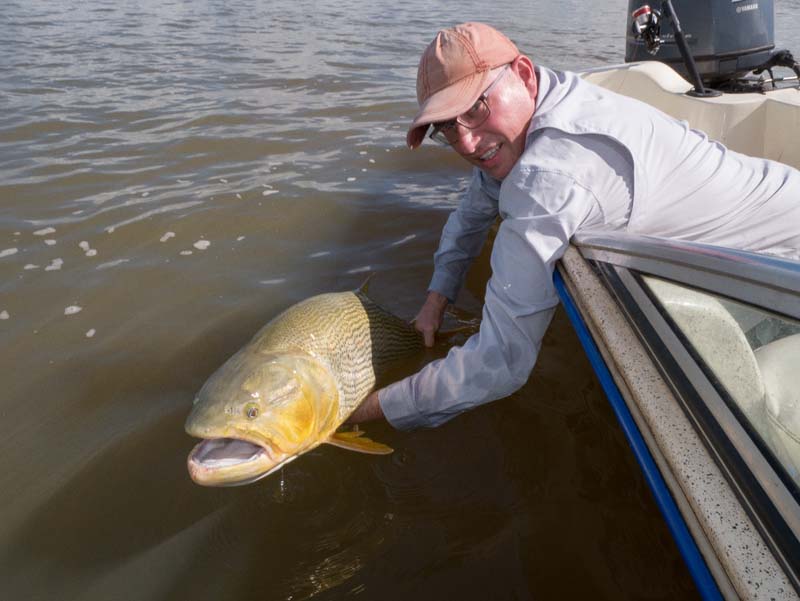
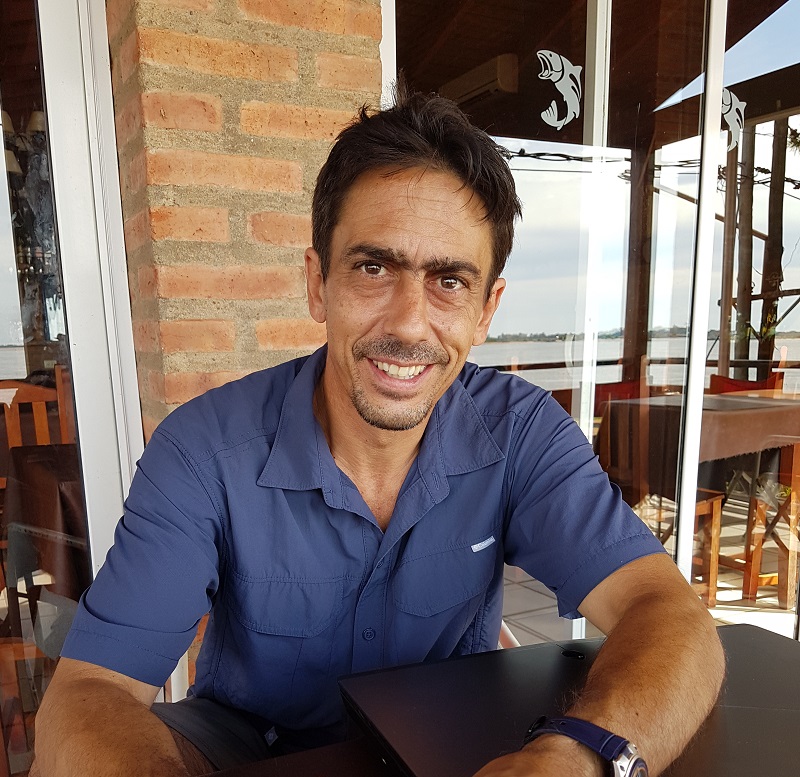
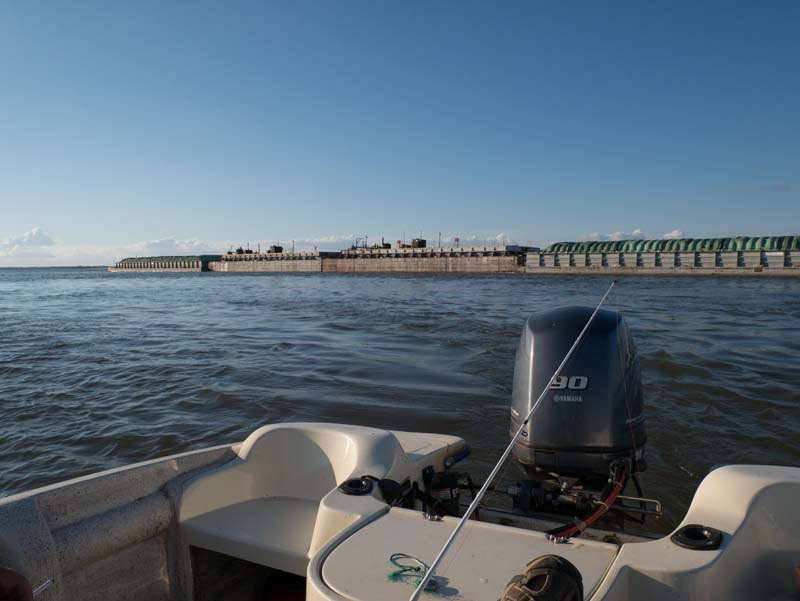
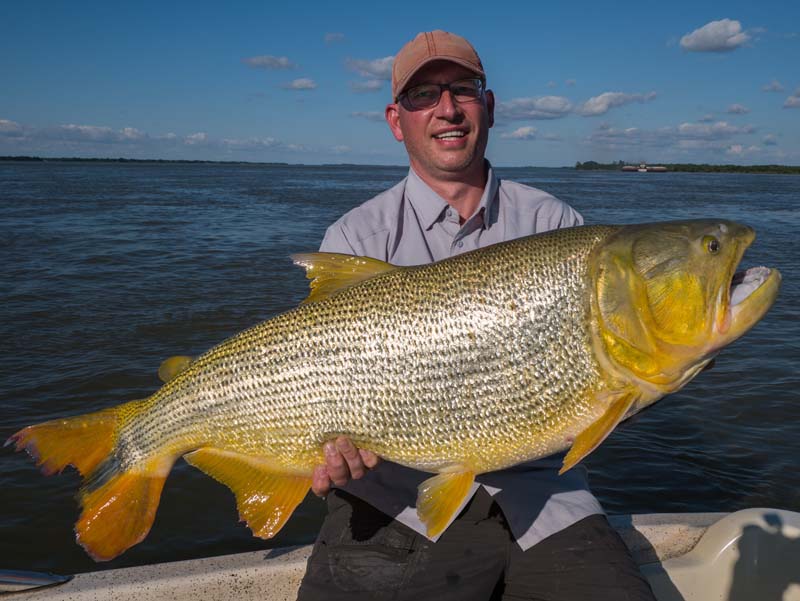
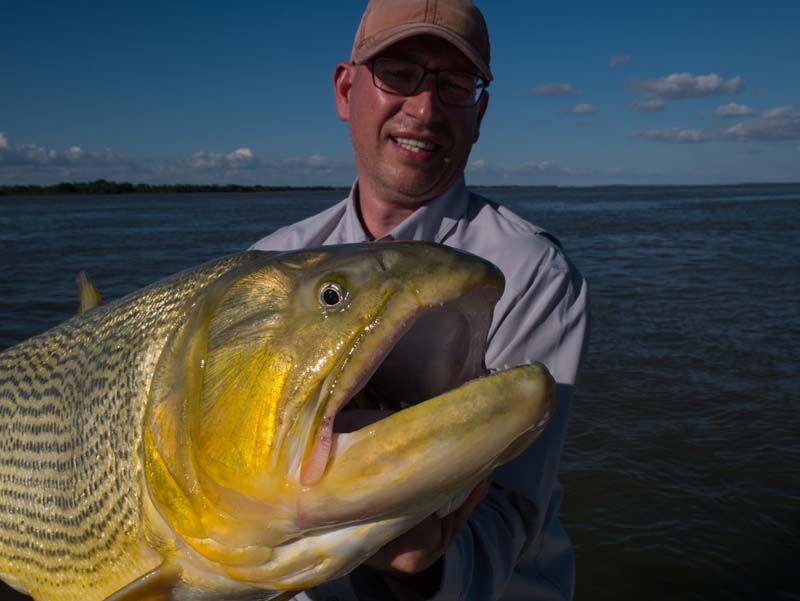
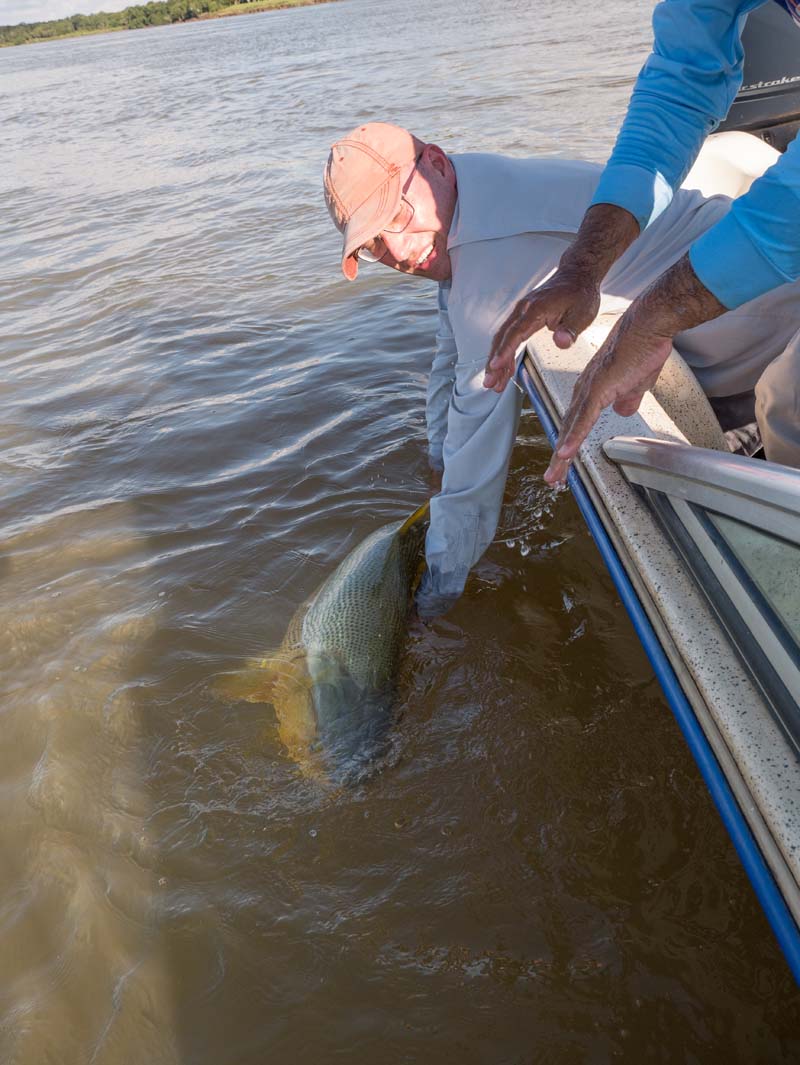
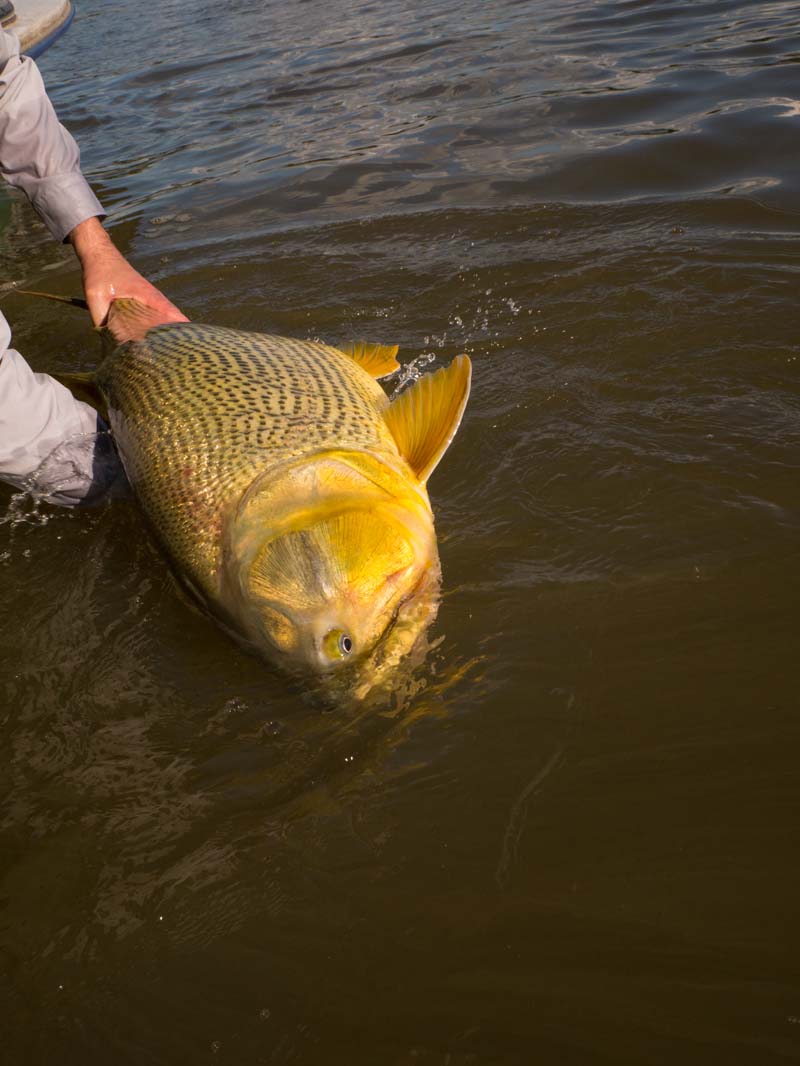
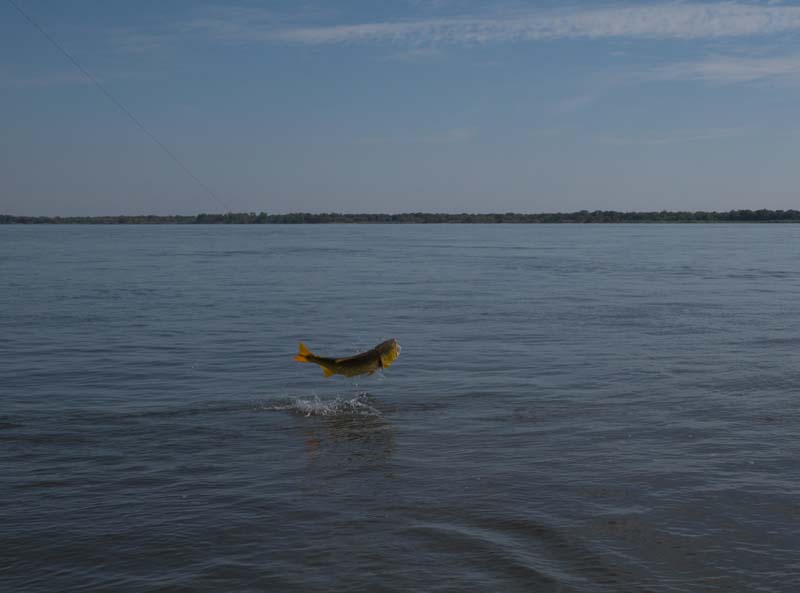
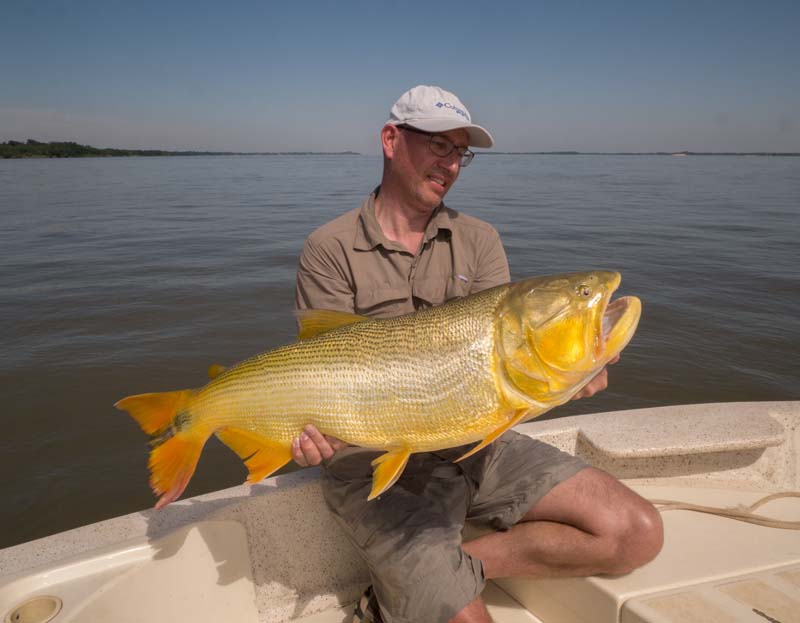
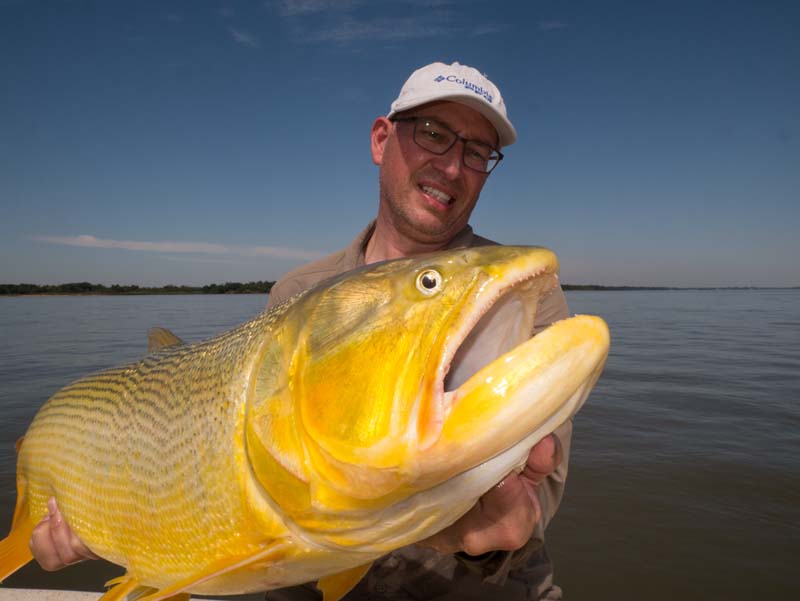
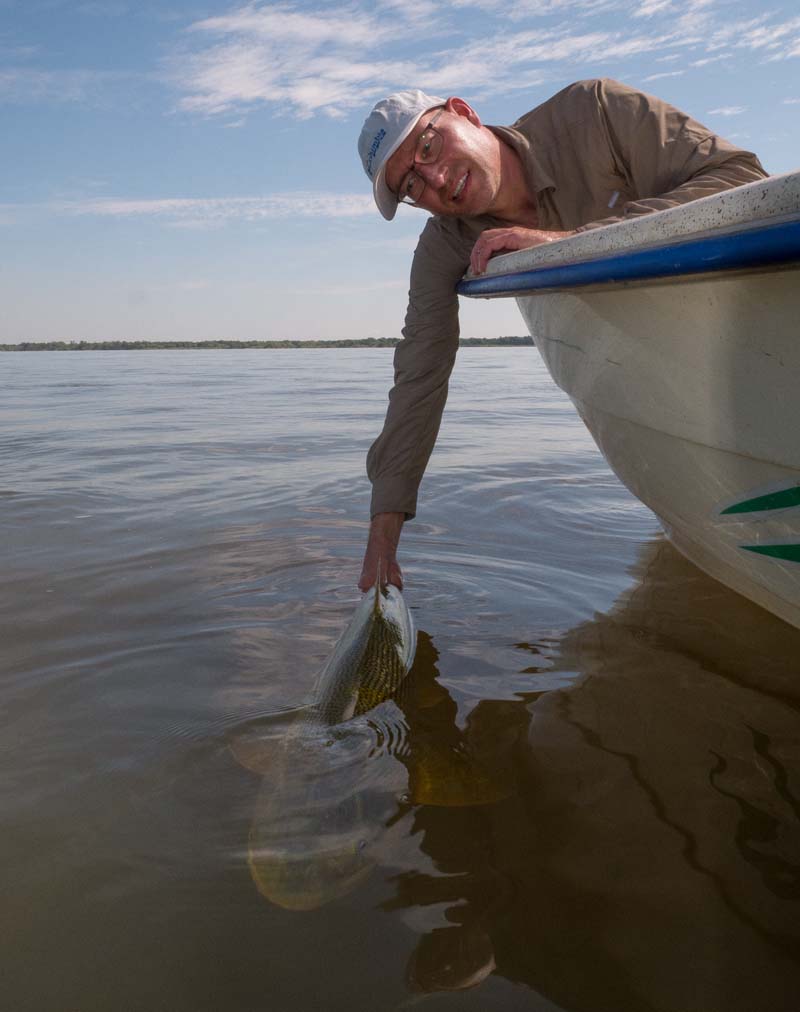
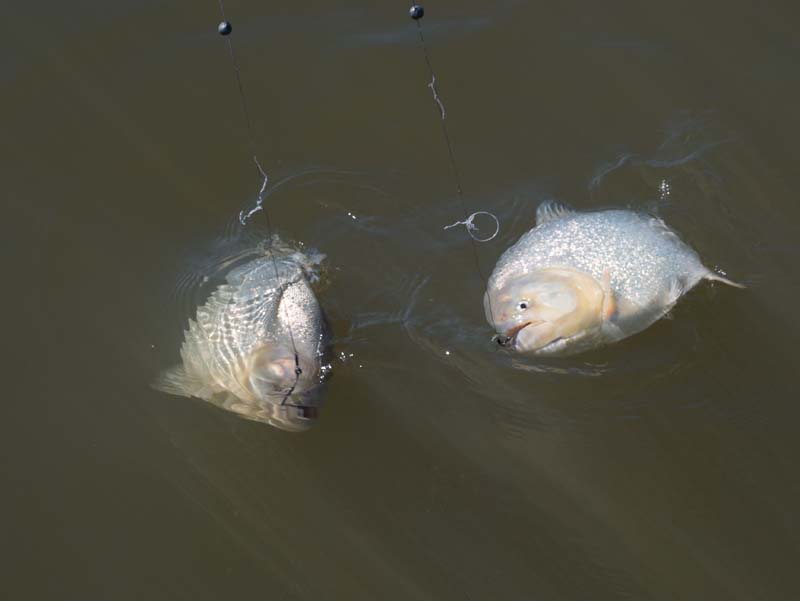
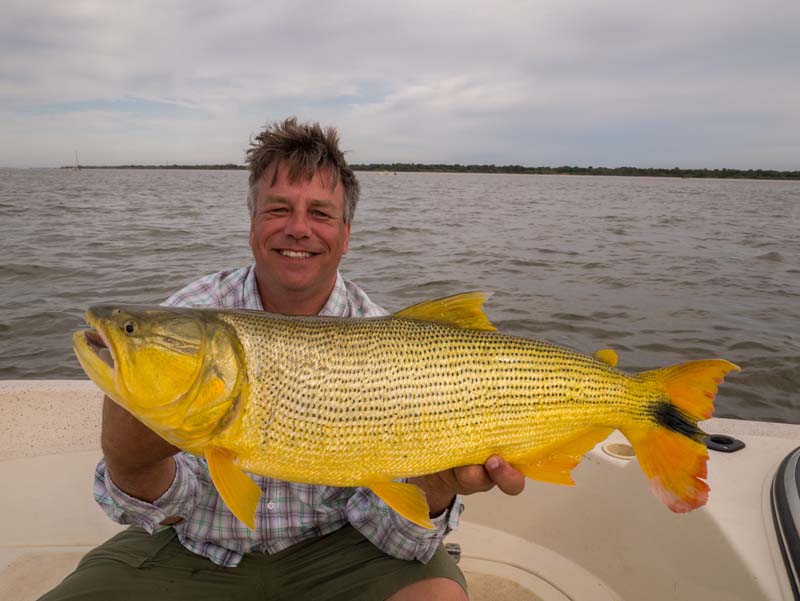
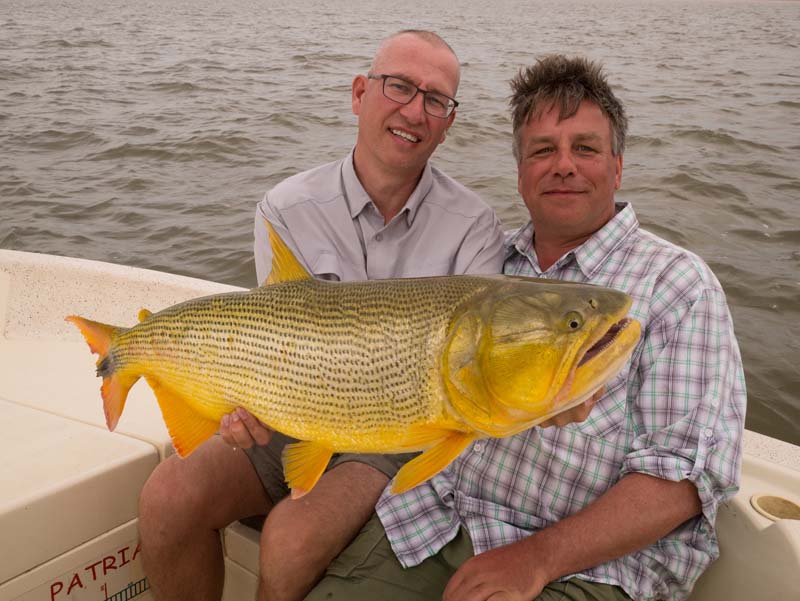
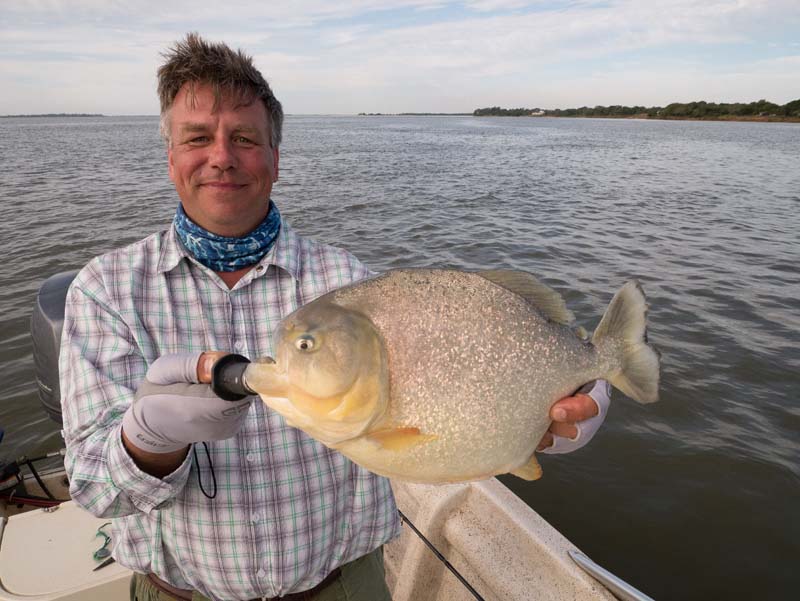
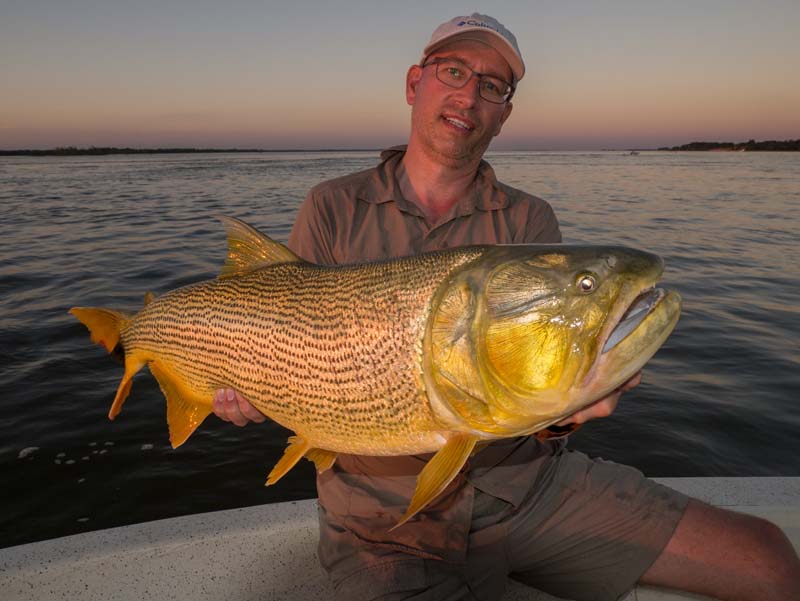
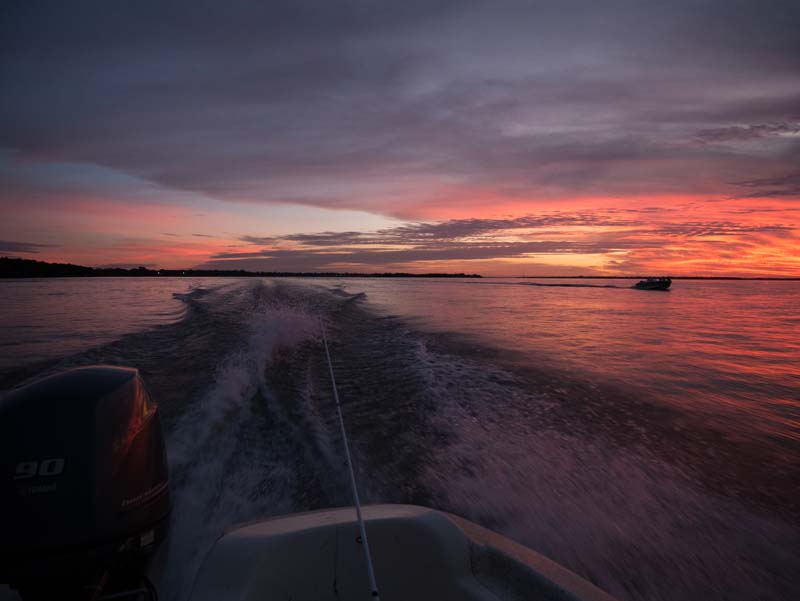


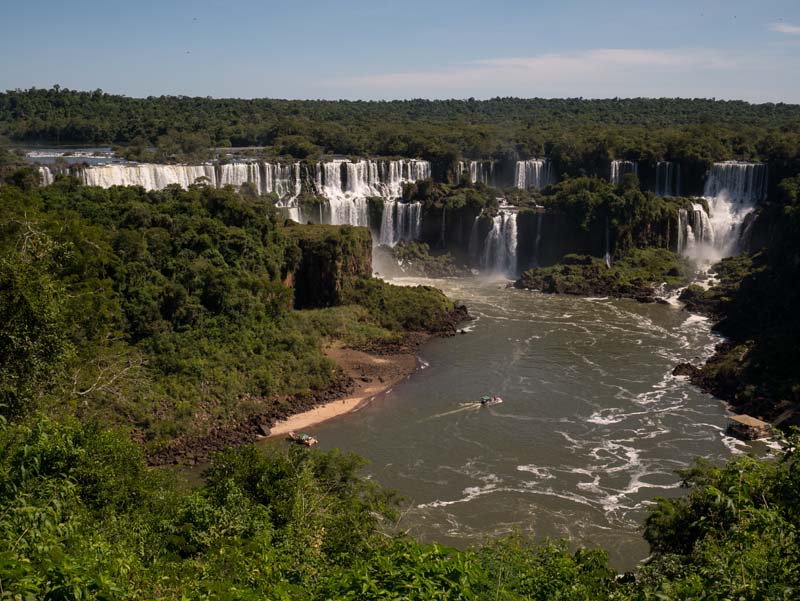
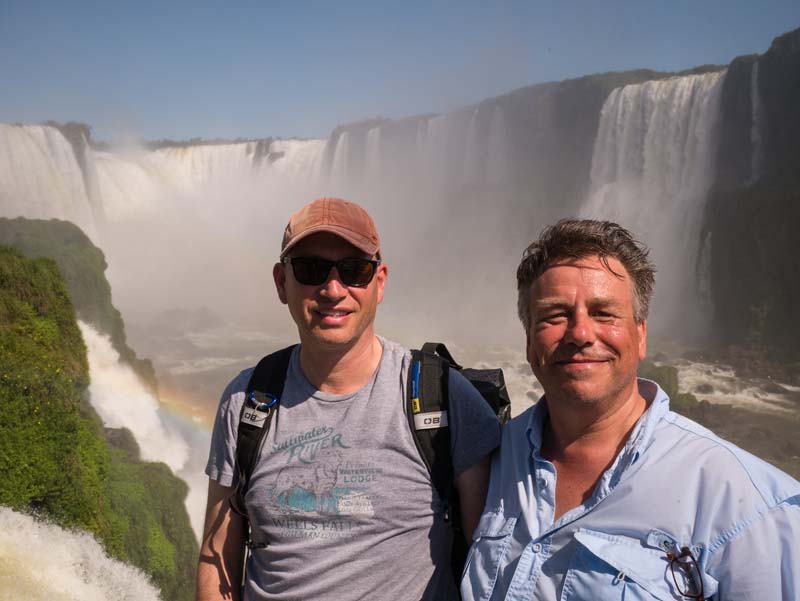
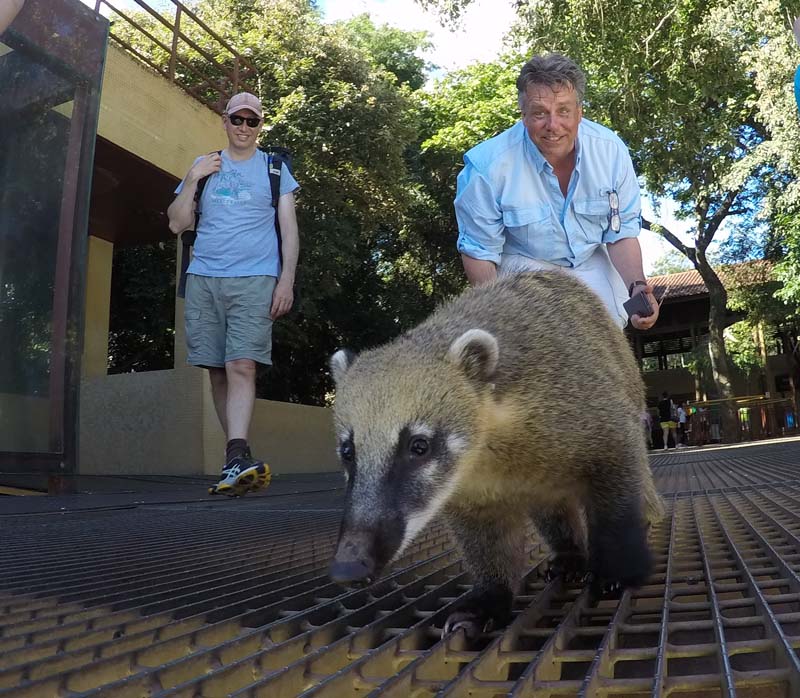
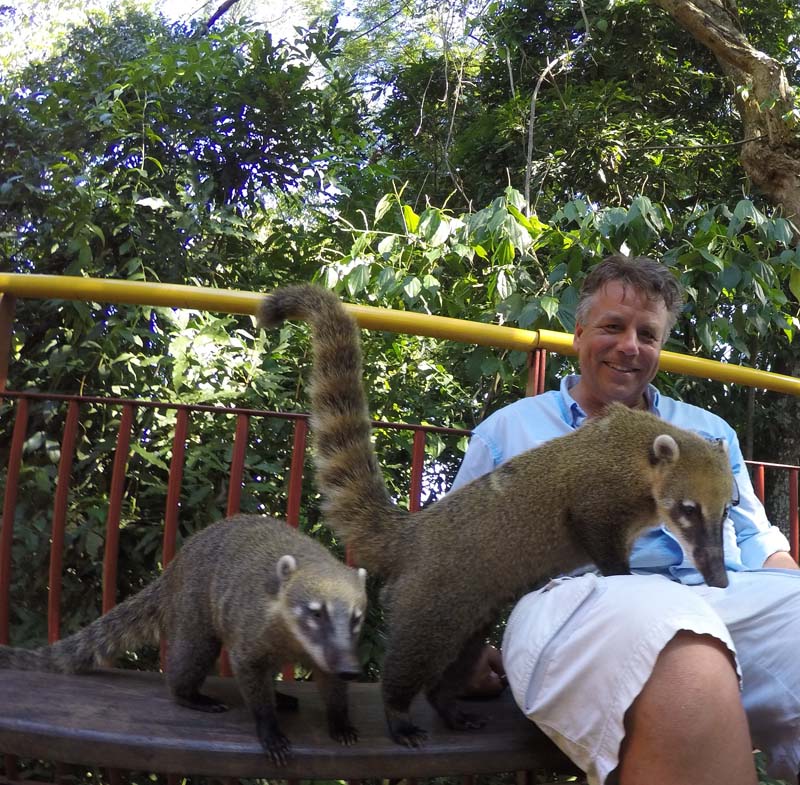
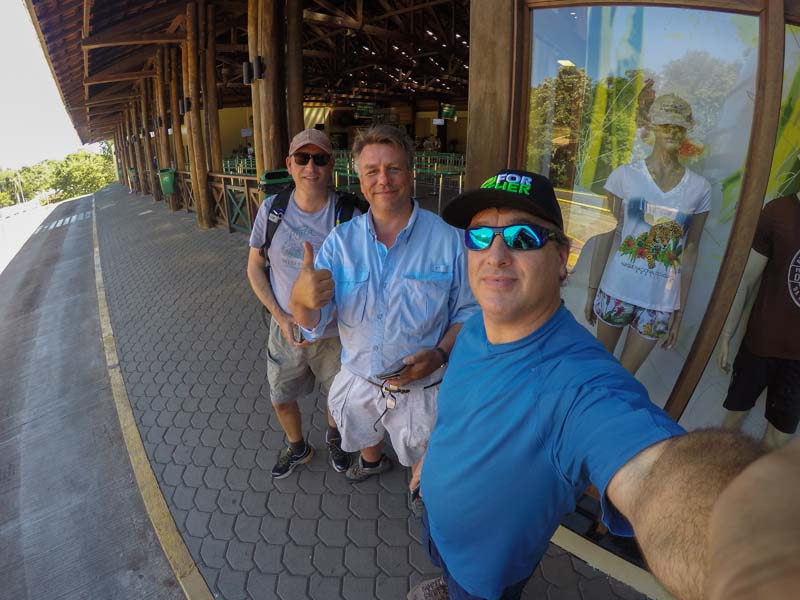
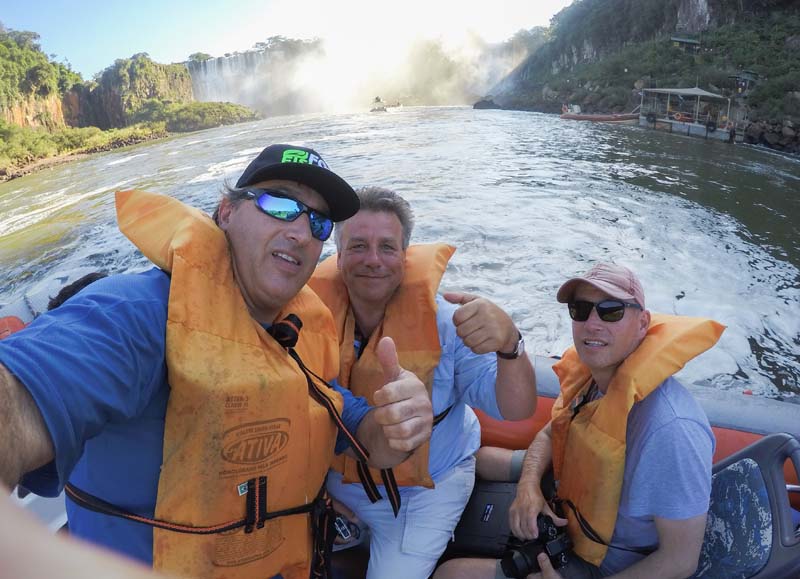
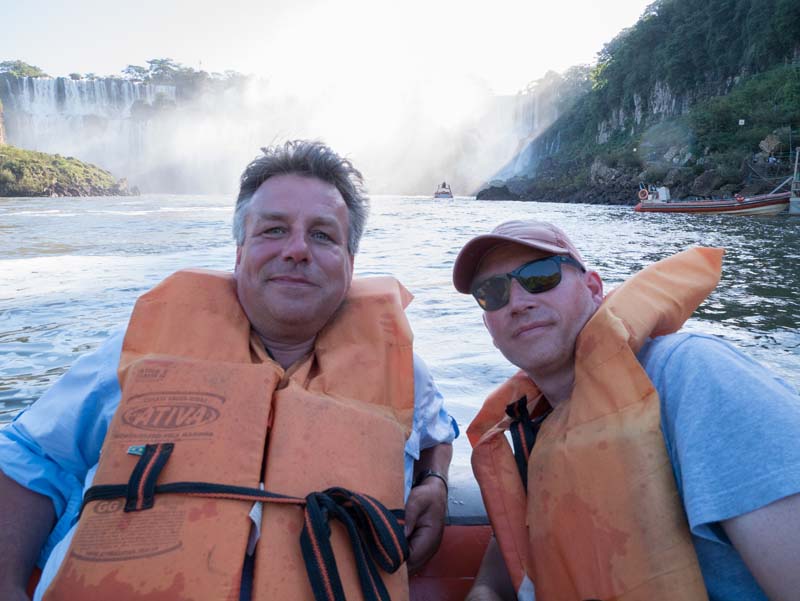


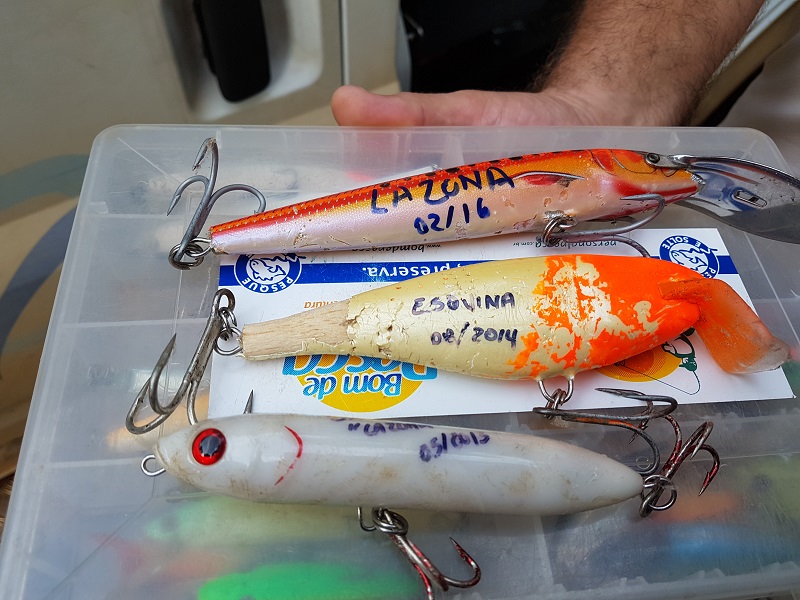
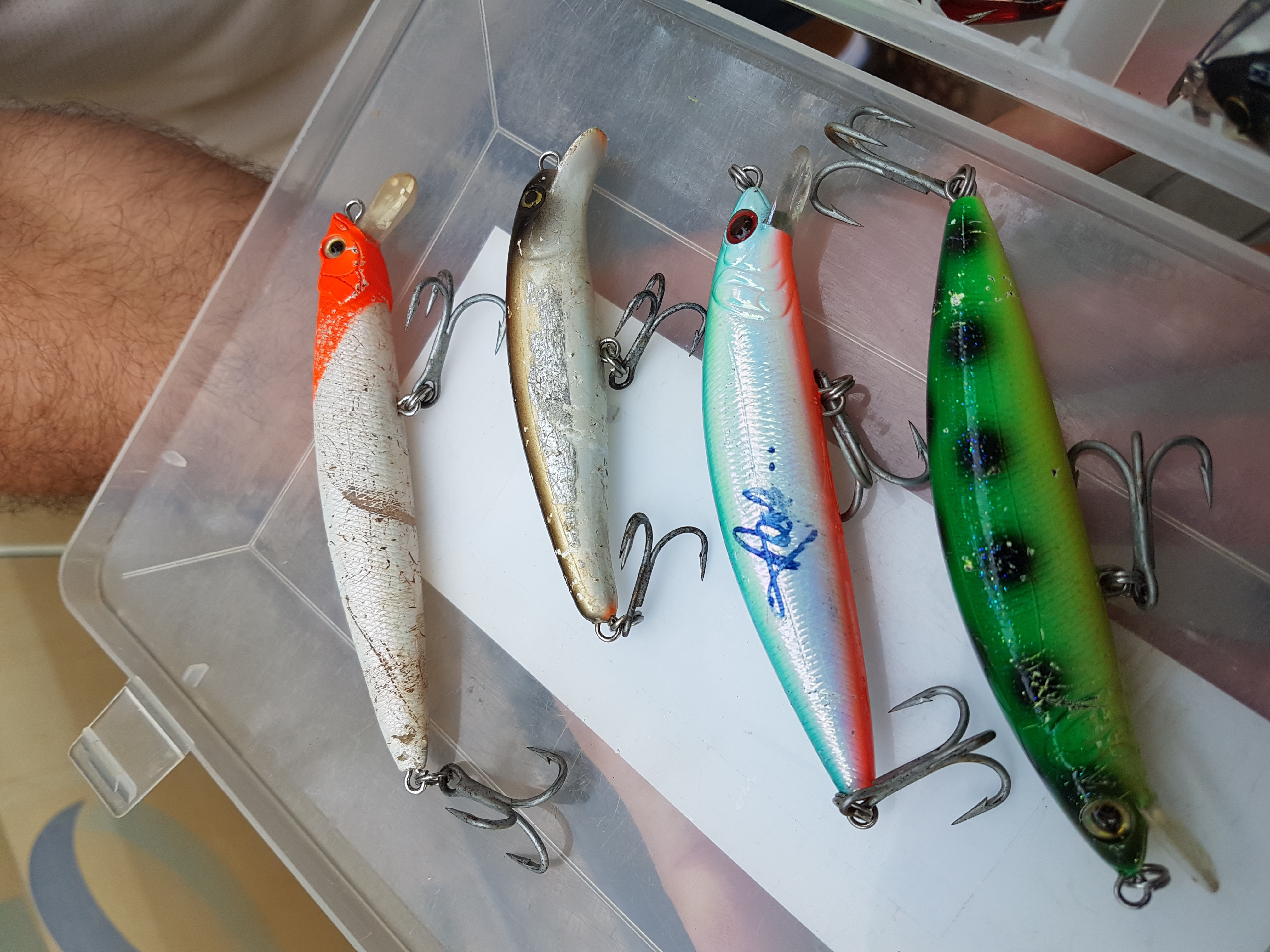
Gaaf heren! Briljant verslag en top vissen!
Schitterende vissen weer, en mooi beschreven!
Mooie grote vissen!
Aan de overkant in Paraguay ligt Paso de la Patria (zelfde naam), een paar uur van Asuncion. Vissen aan deze kant scheelt zeker de helft van het geld. Het is helaas verboden voor de Paraguayaanse visbootjes om aan de Argentijnse kant tussen de rotsen te vissen.
Een fantastisch avontuur.